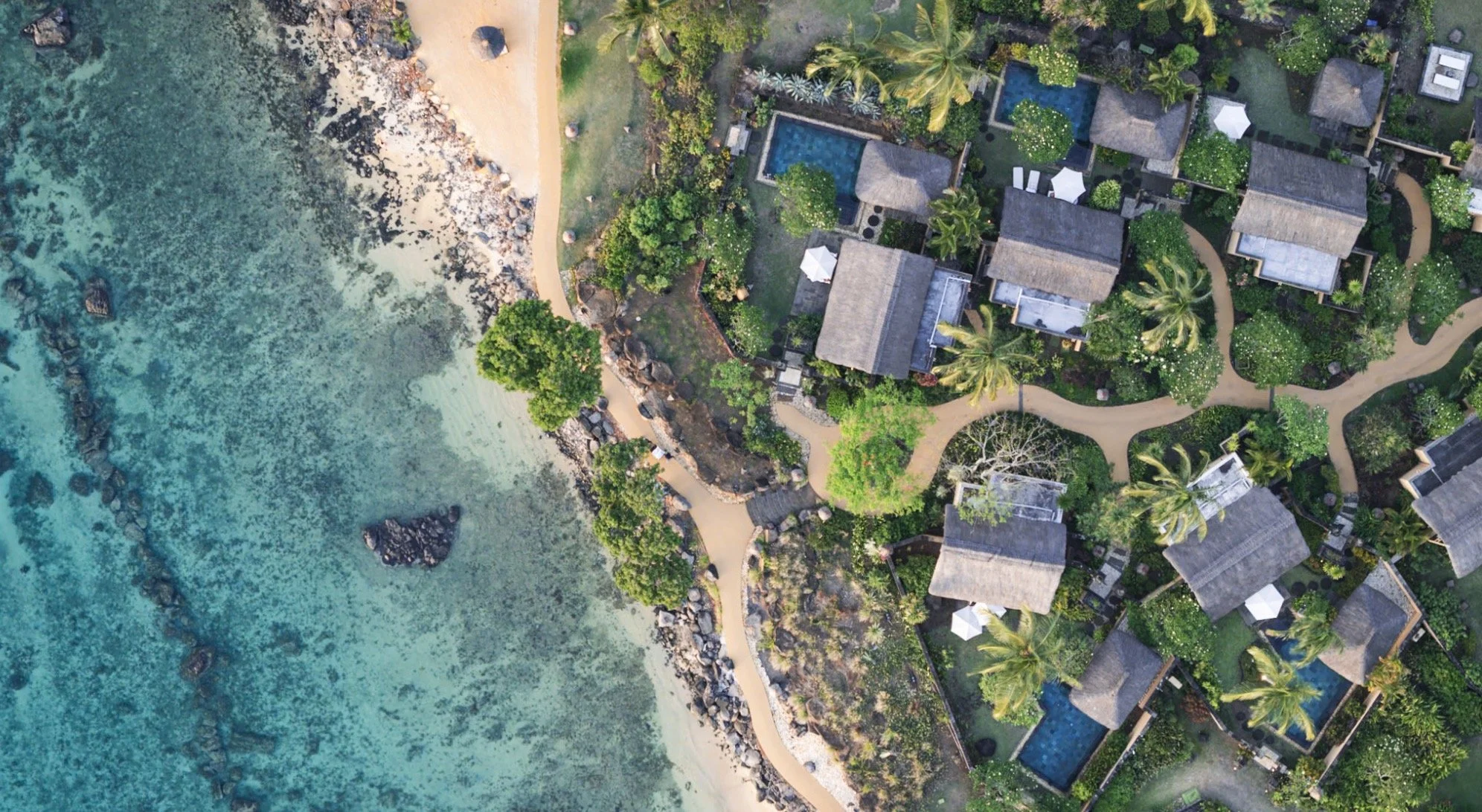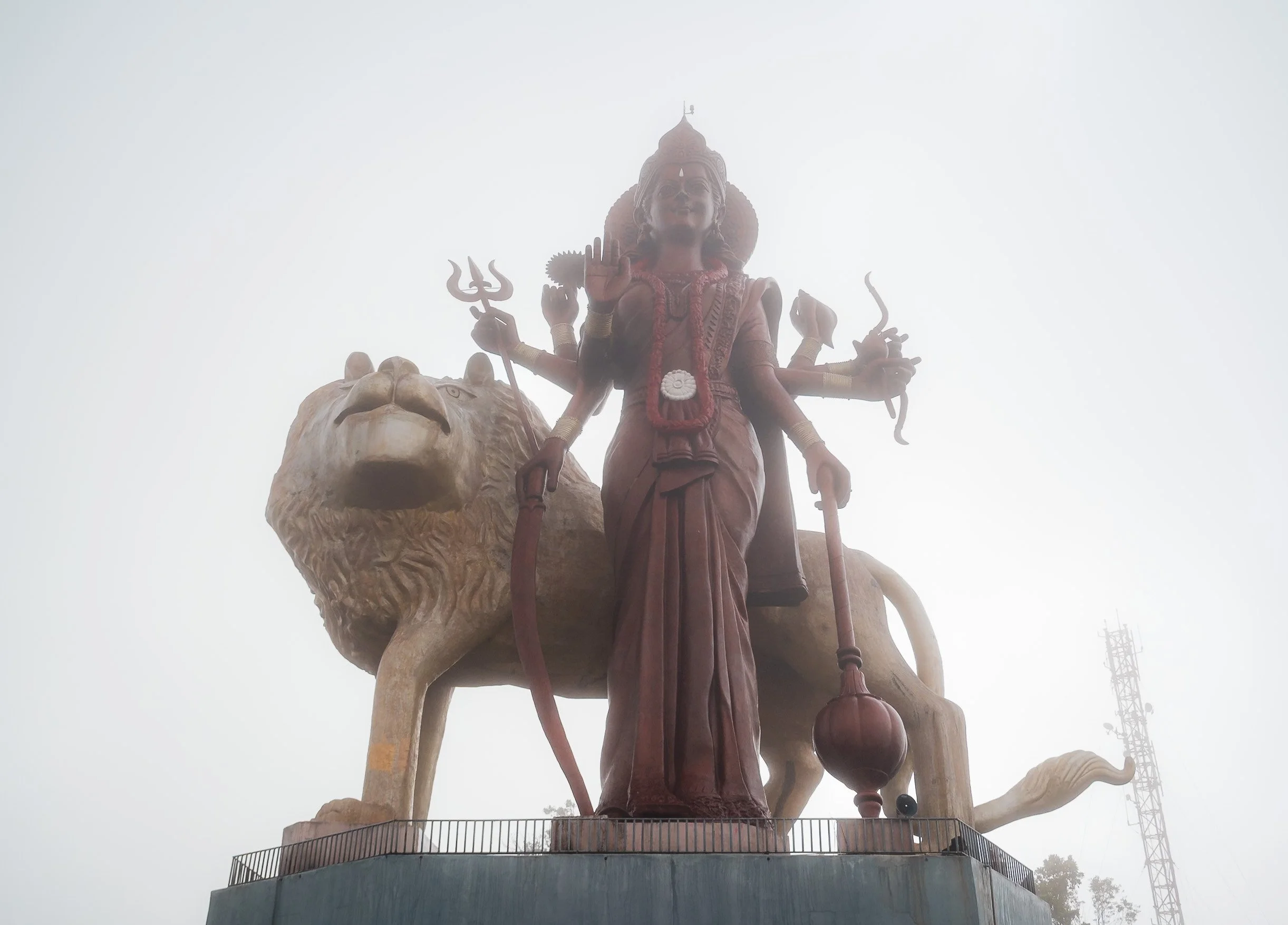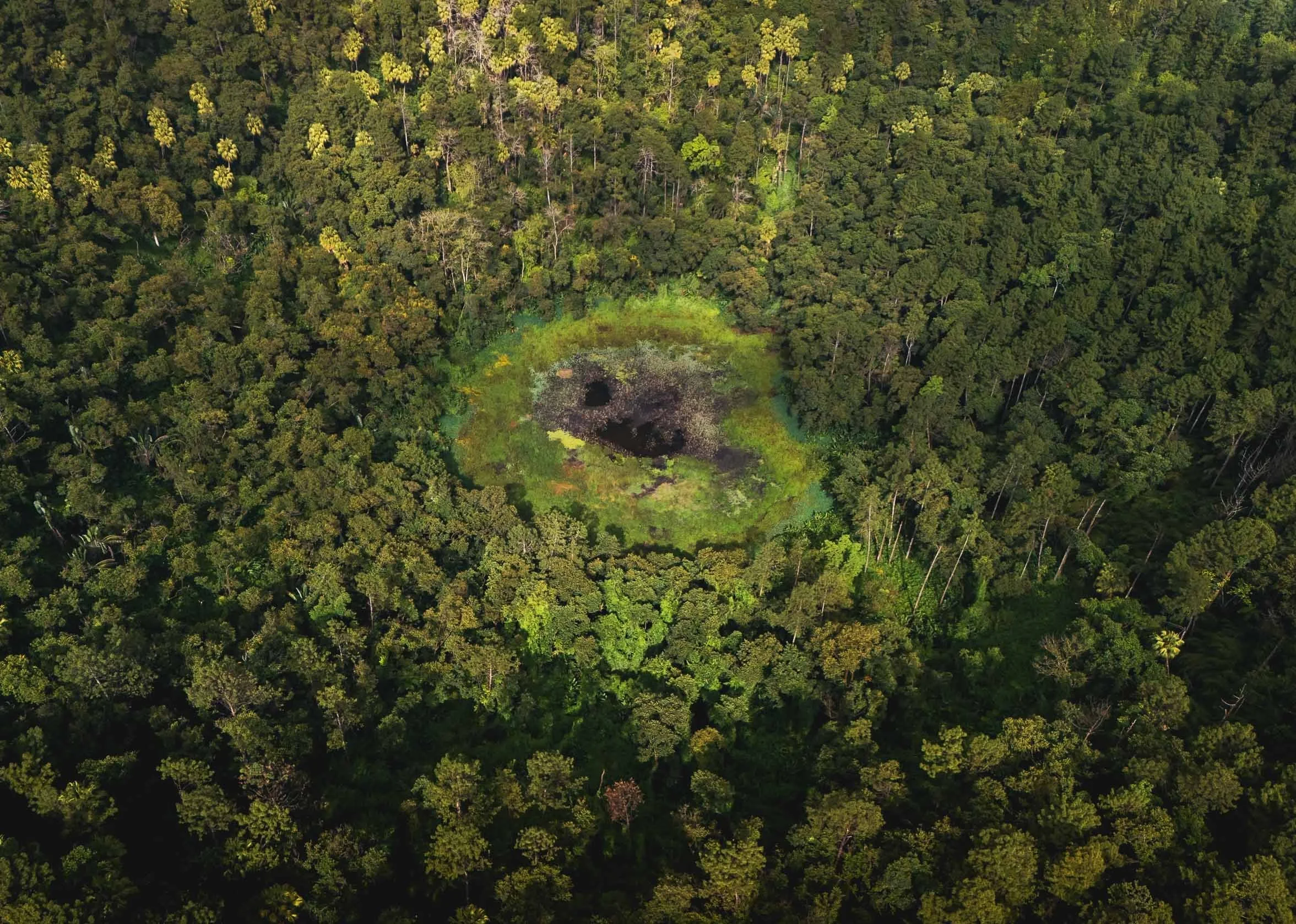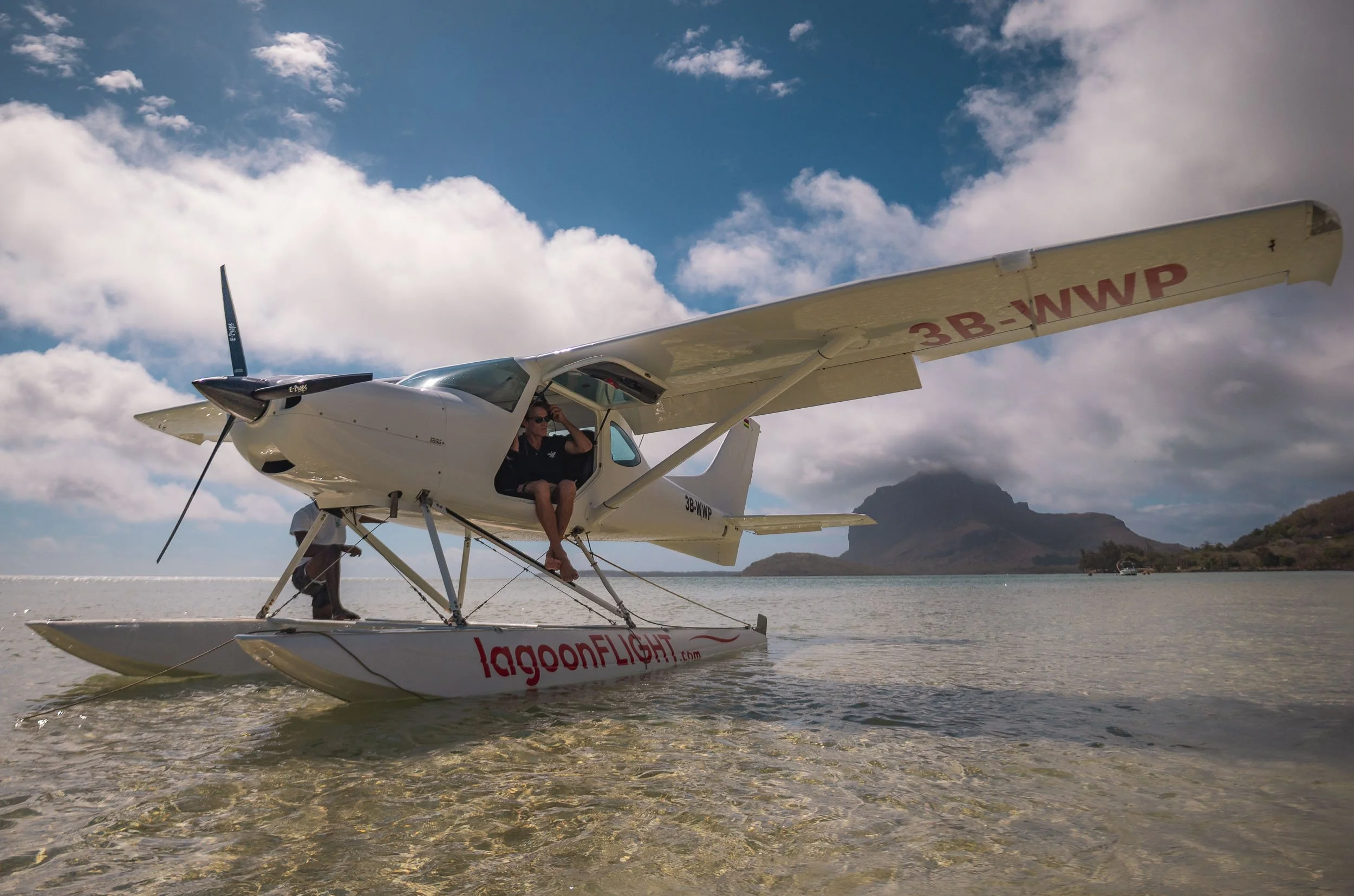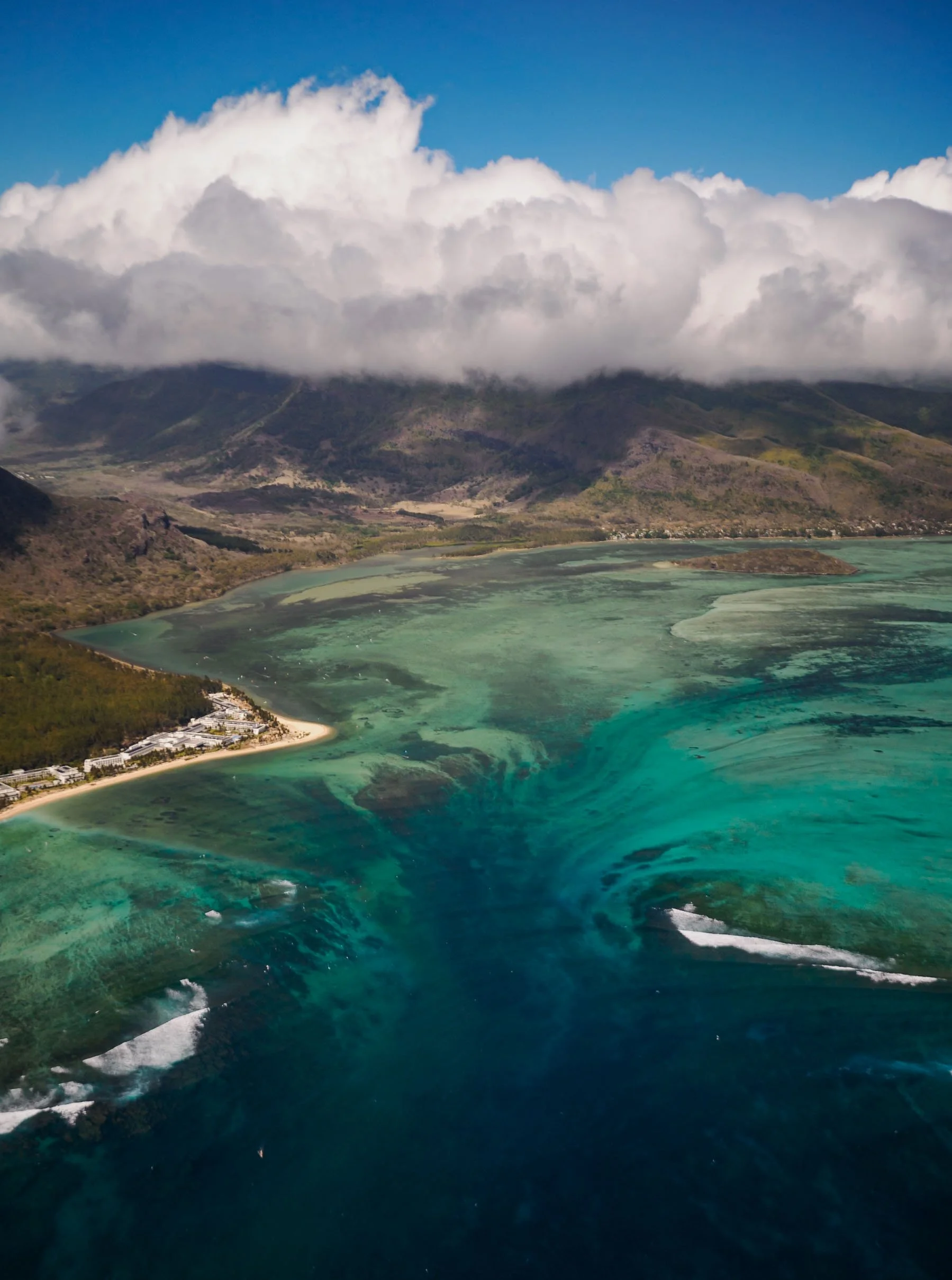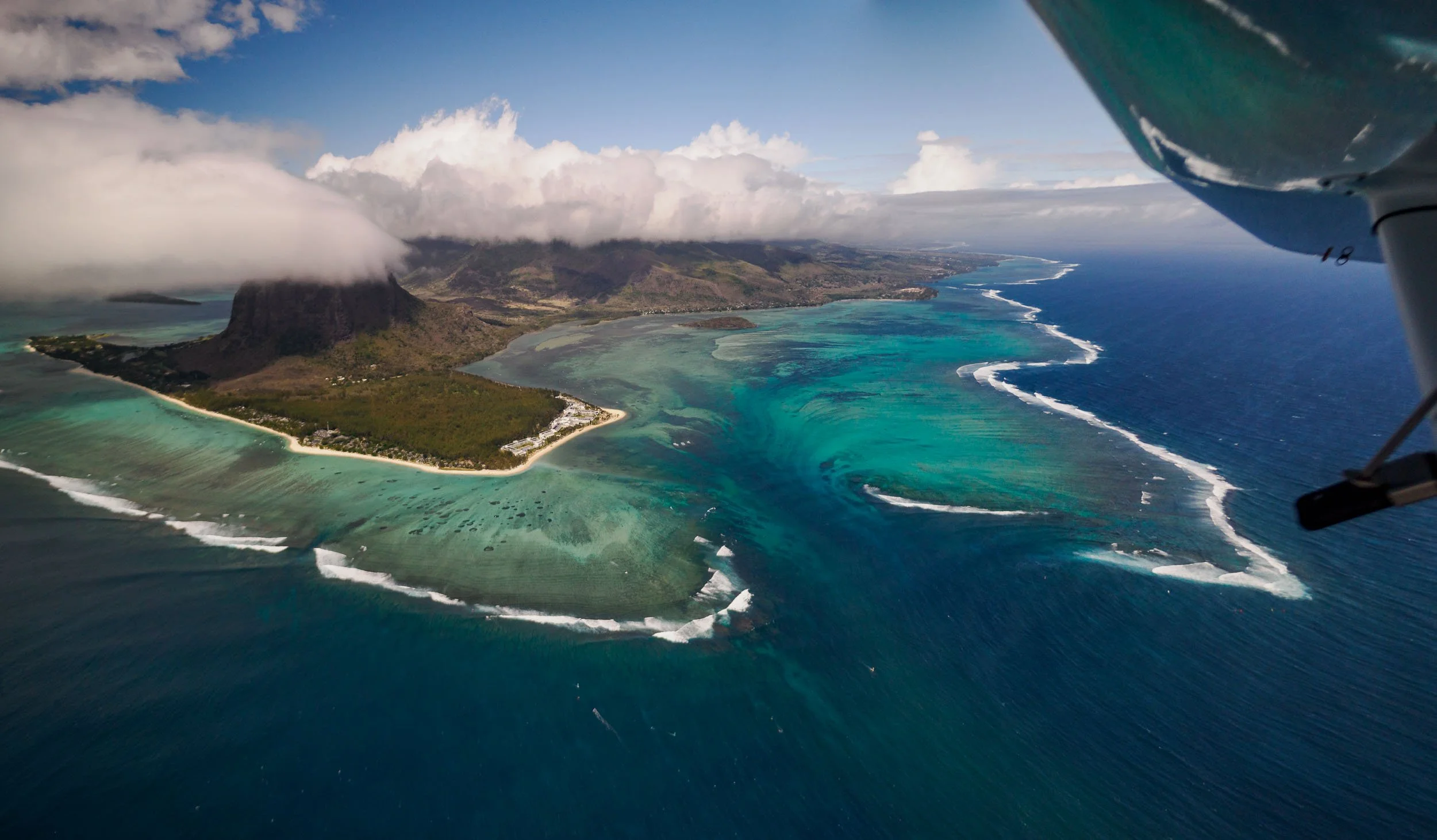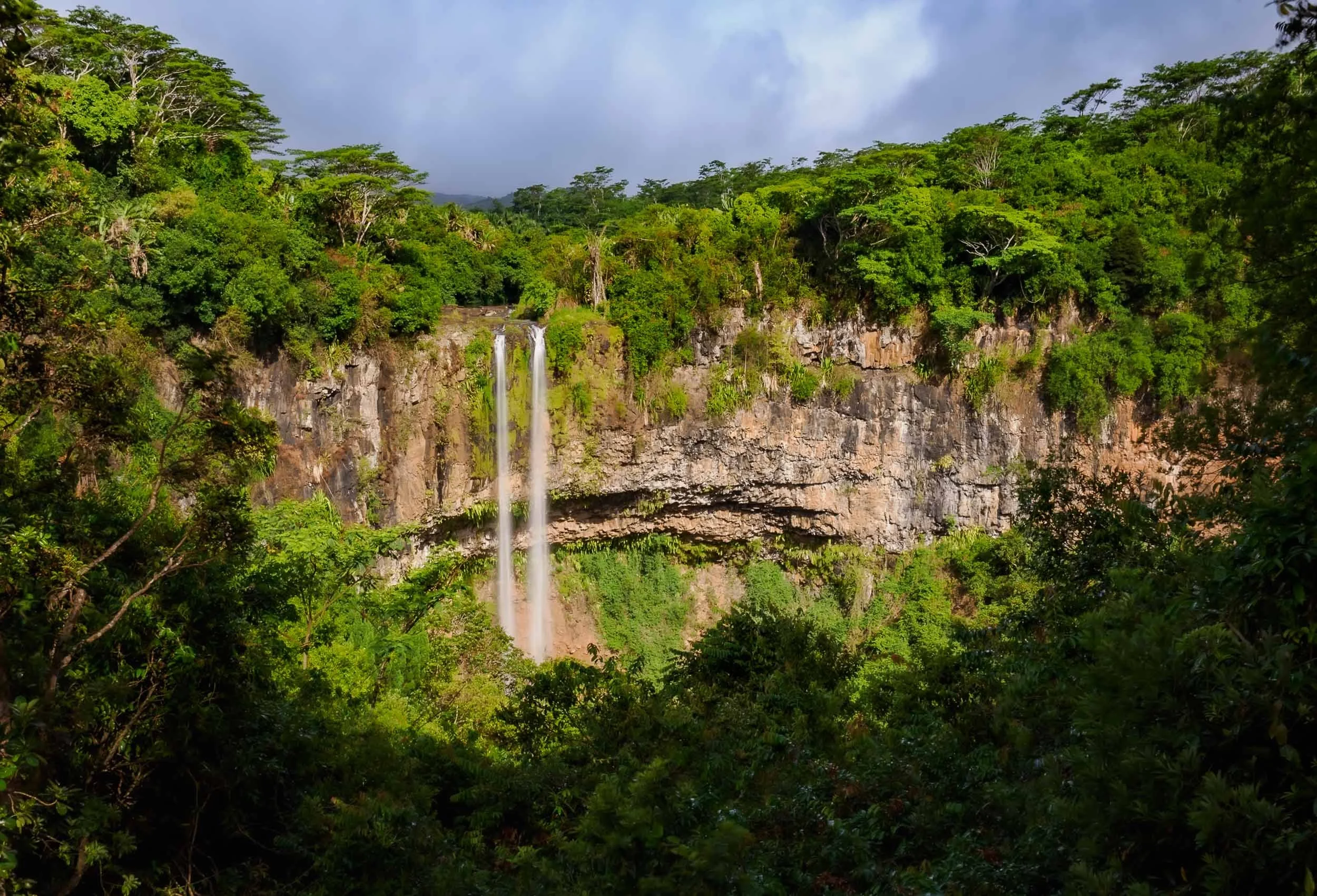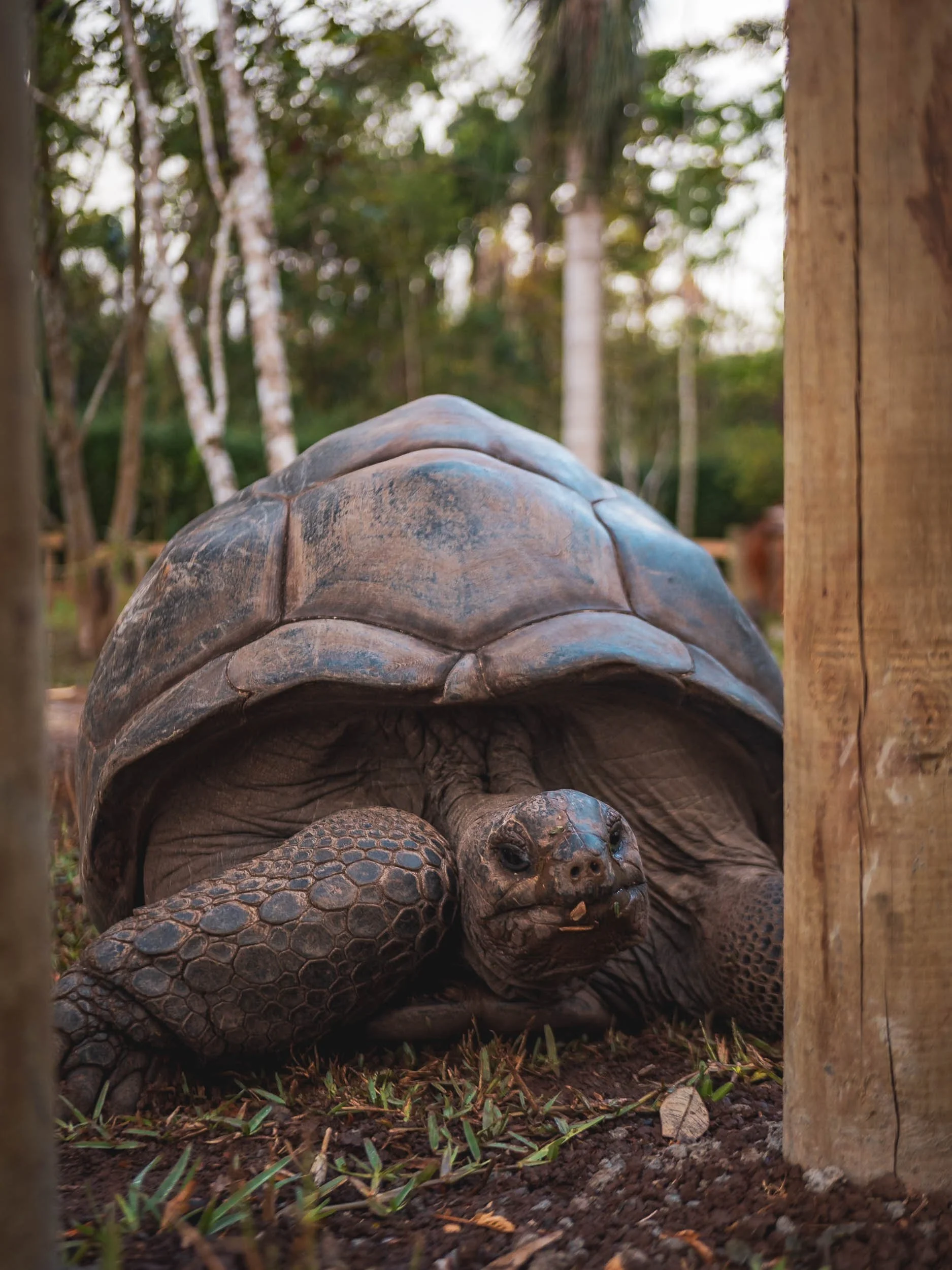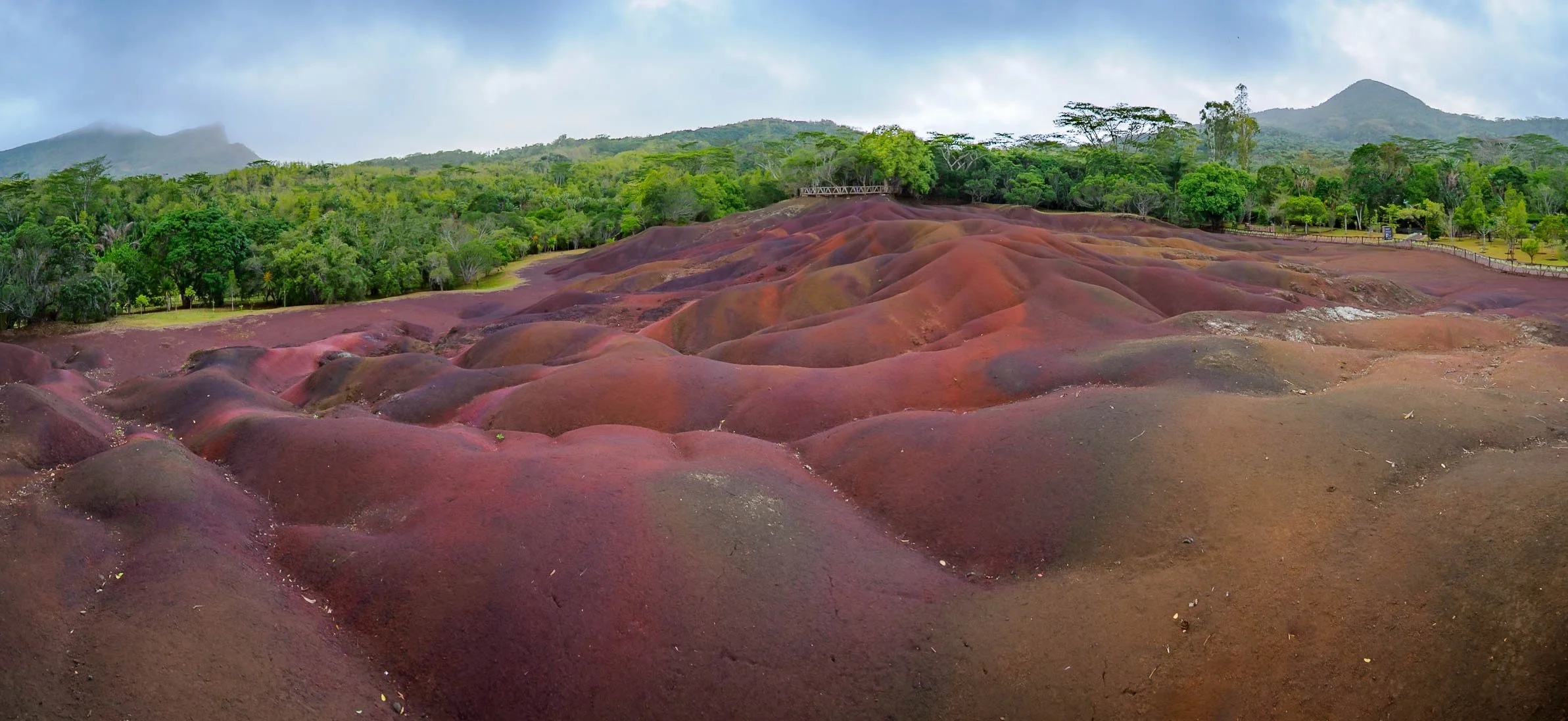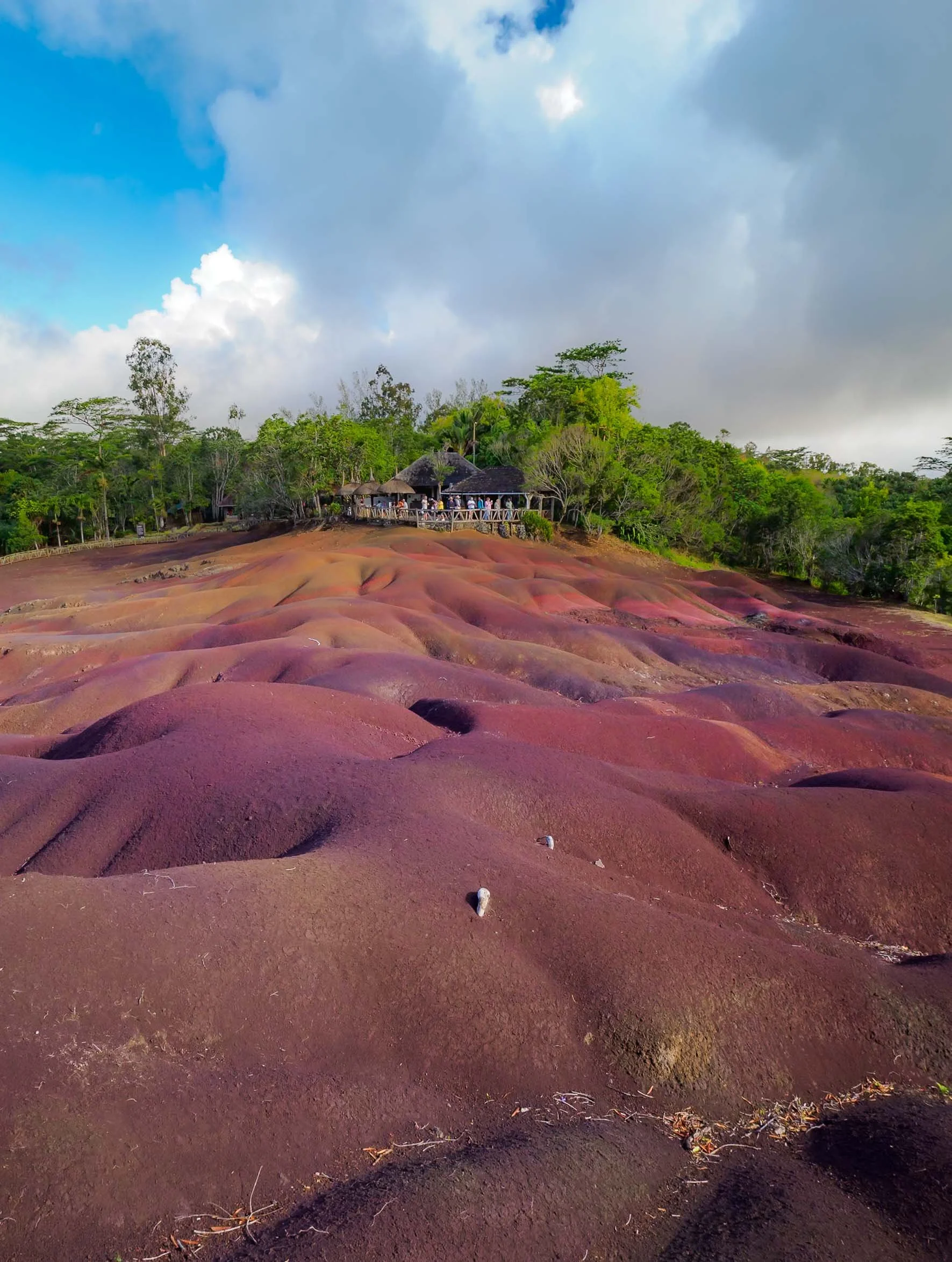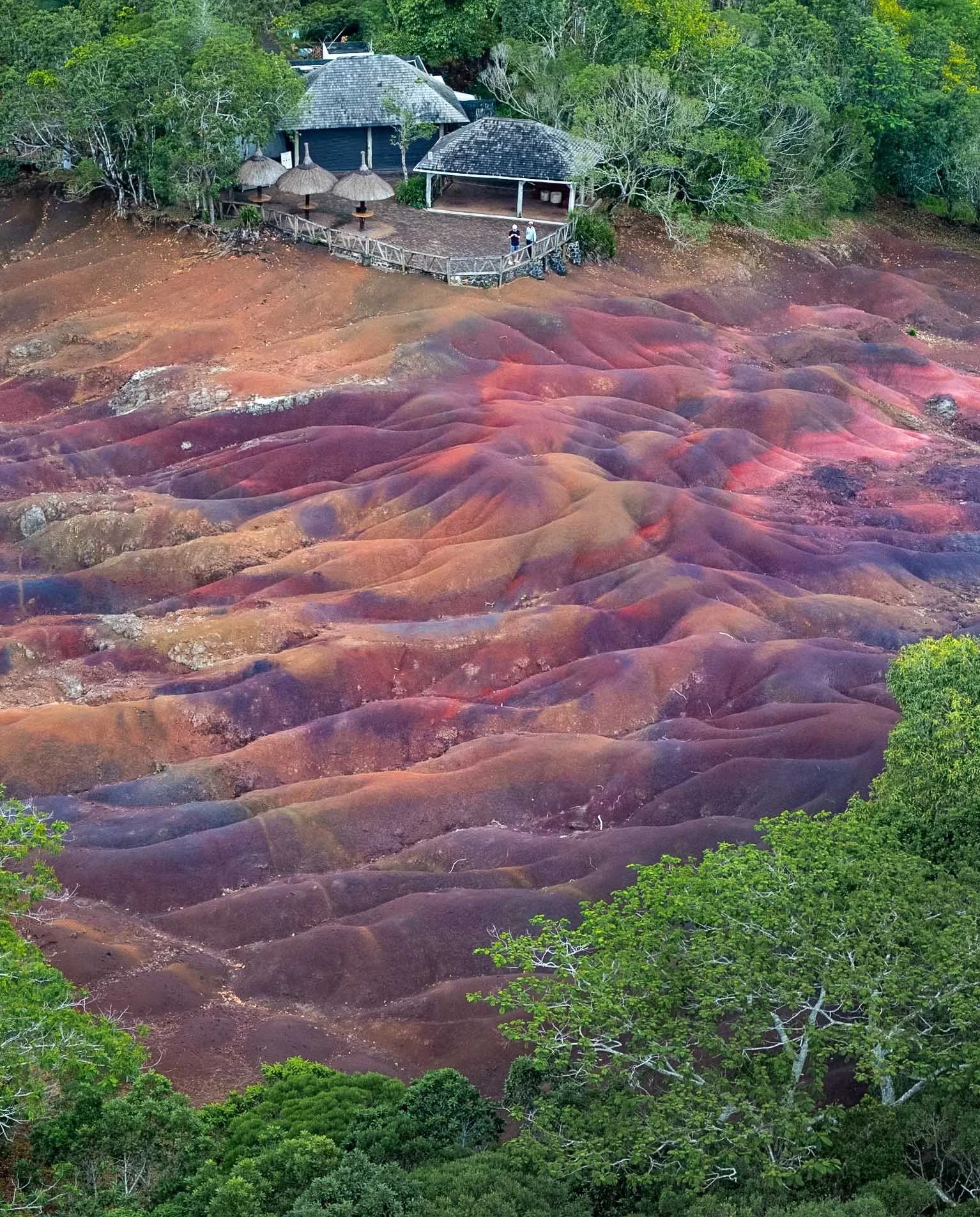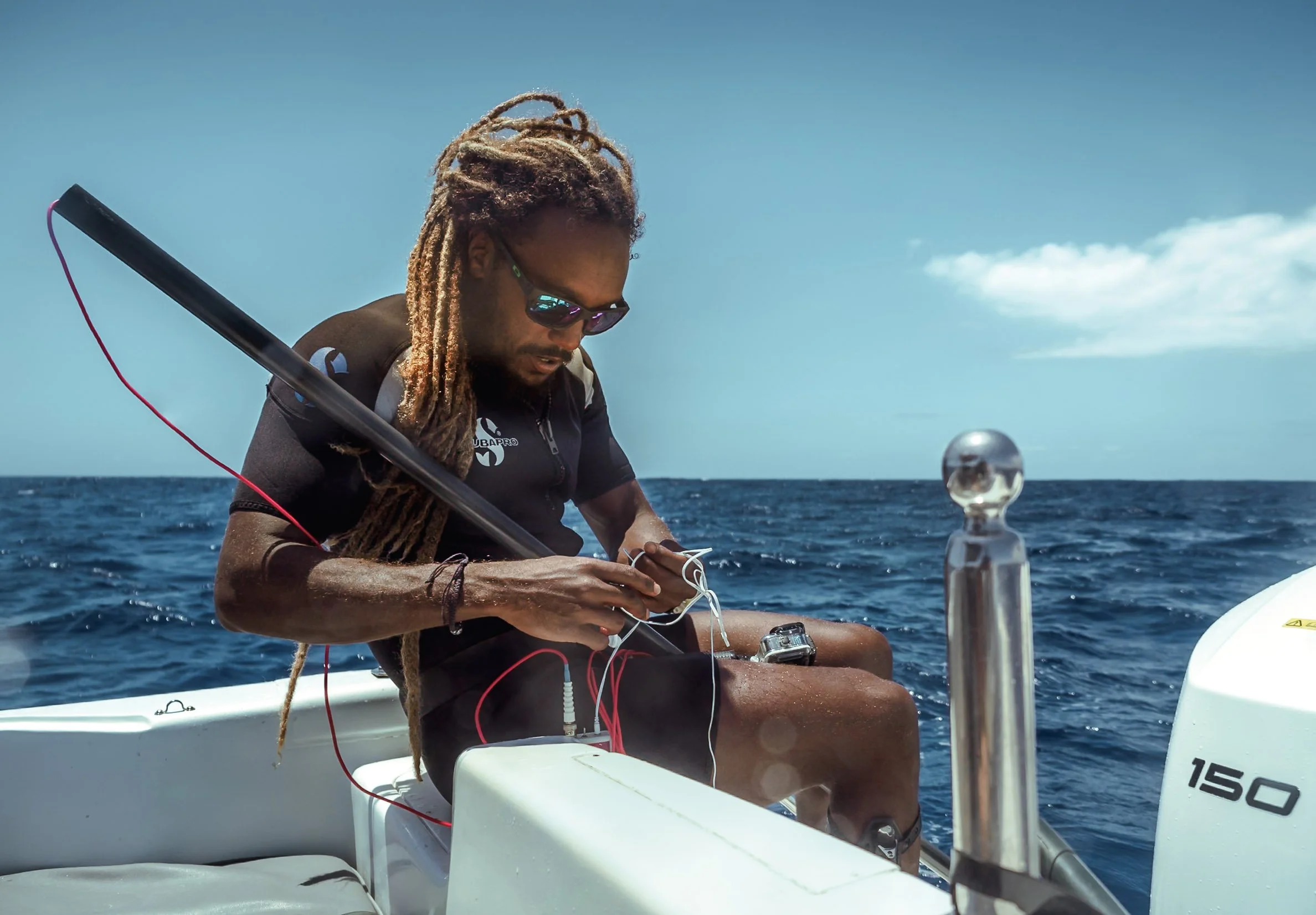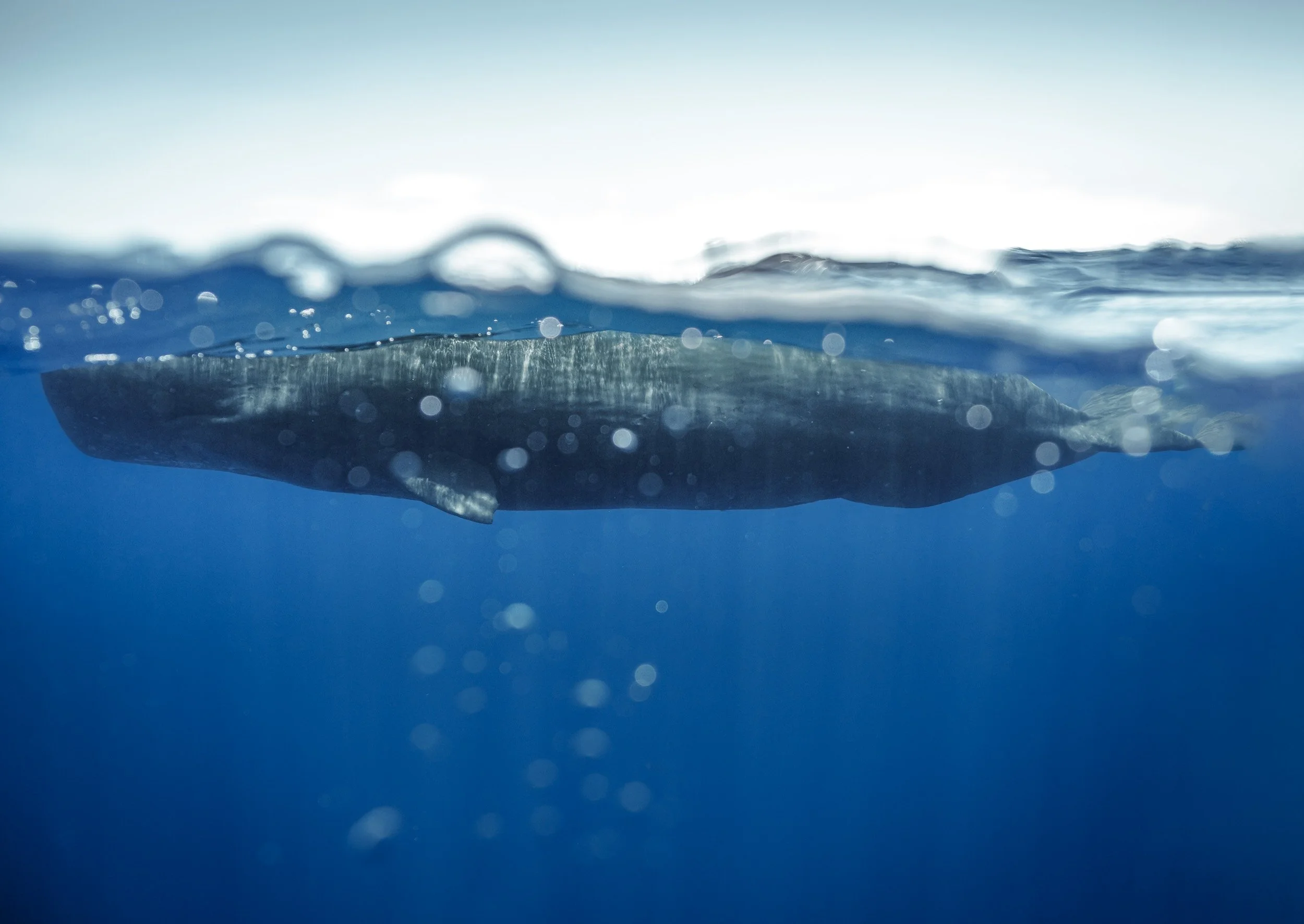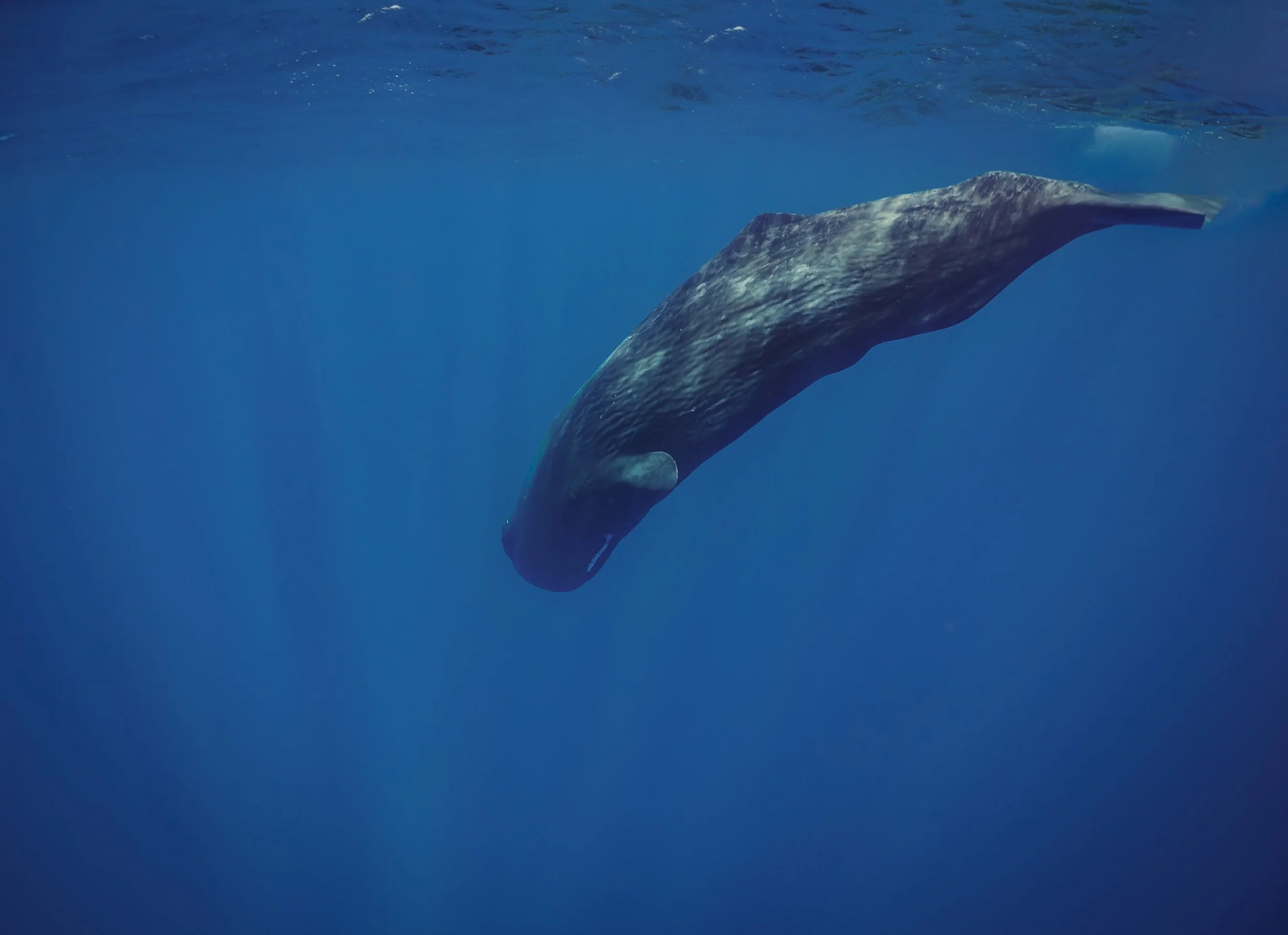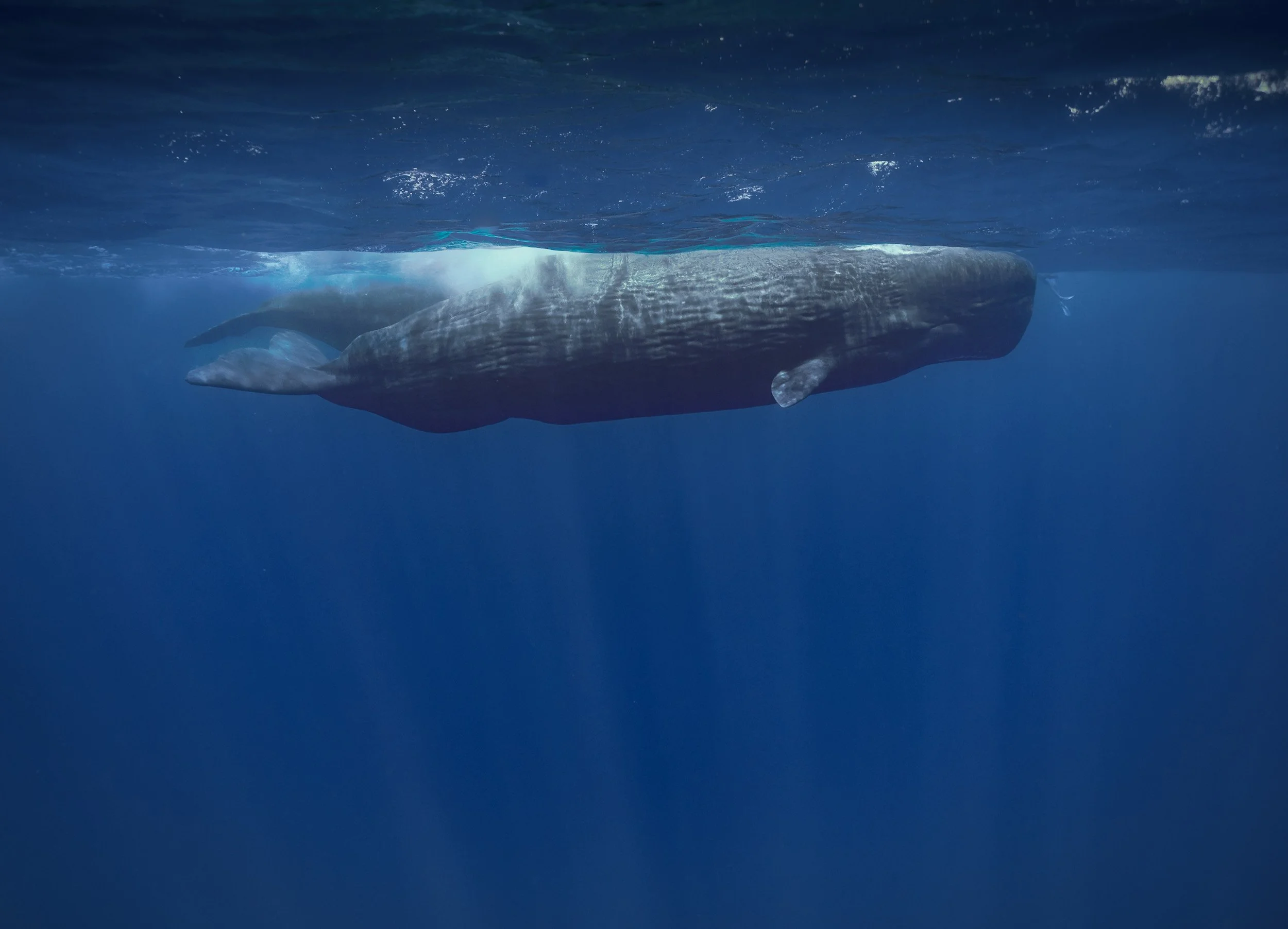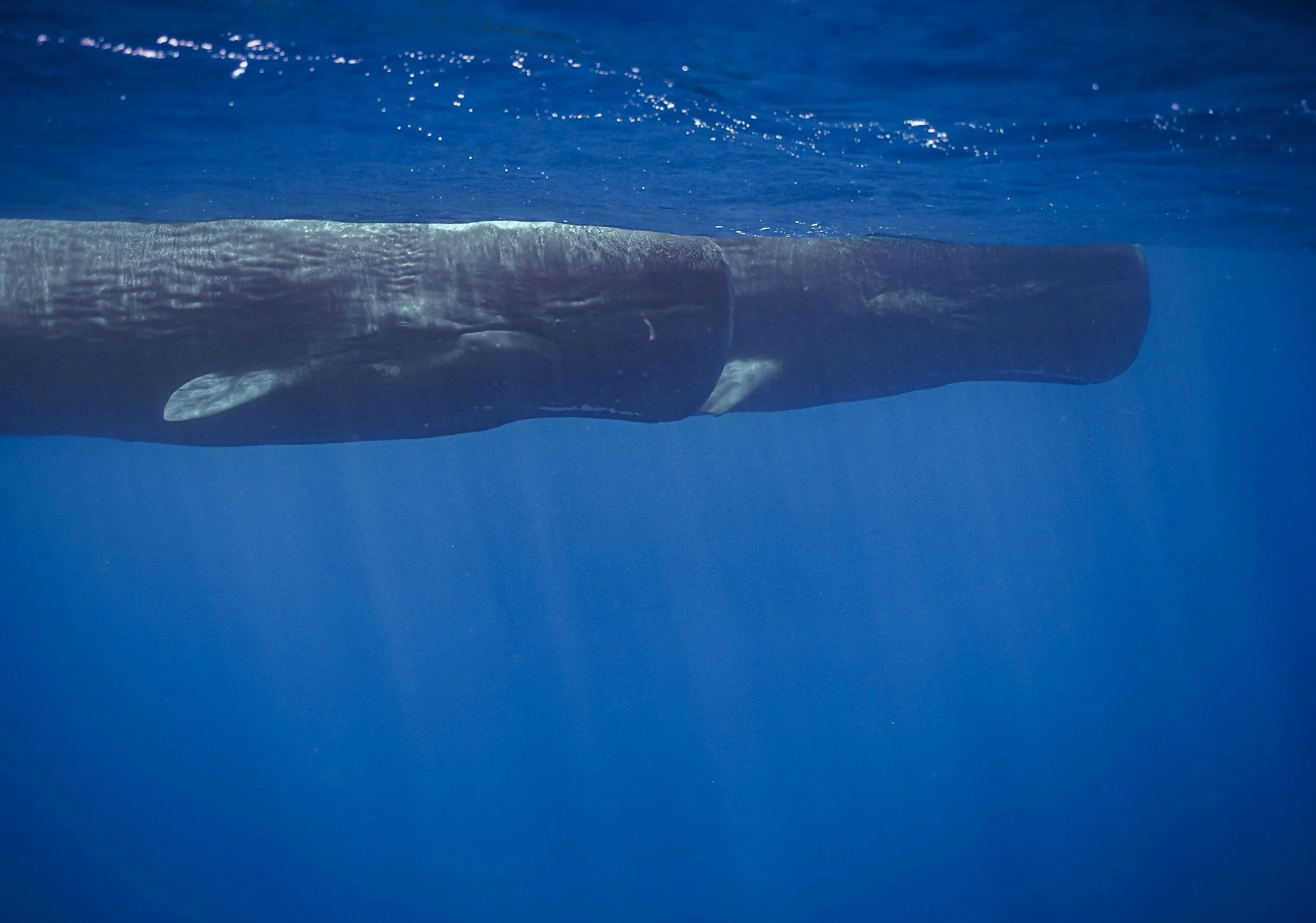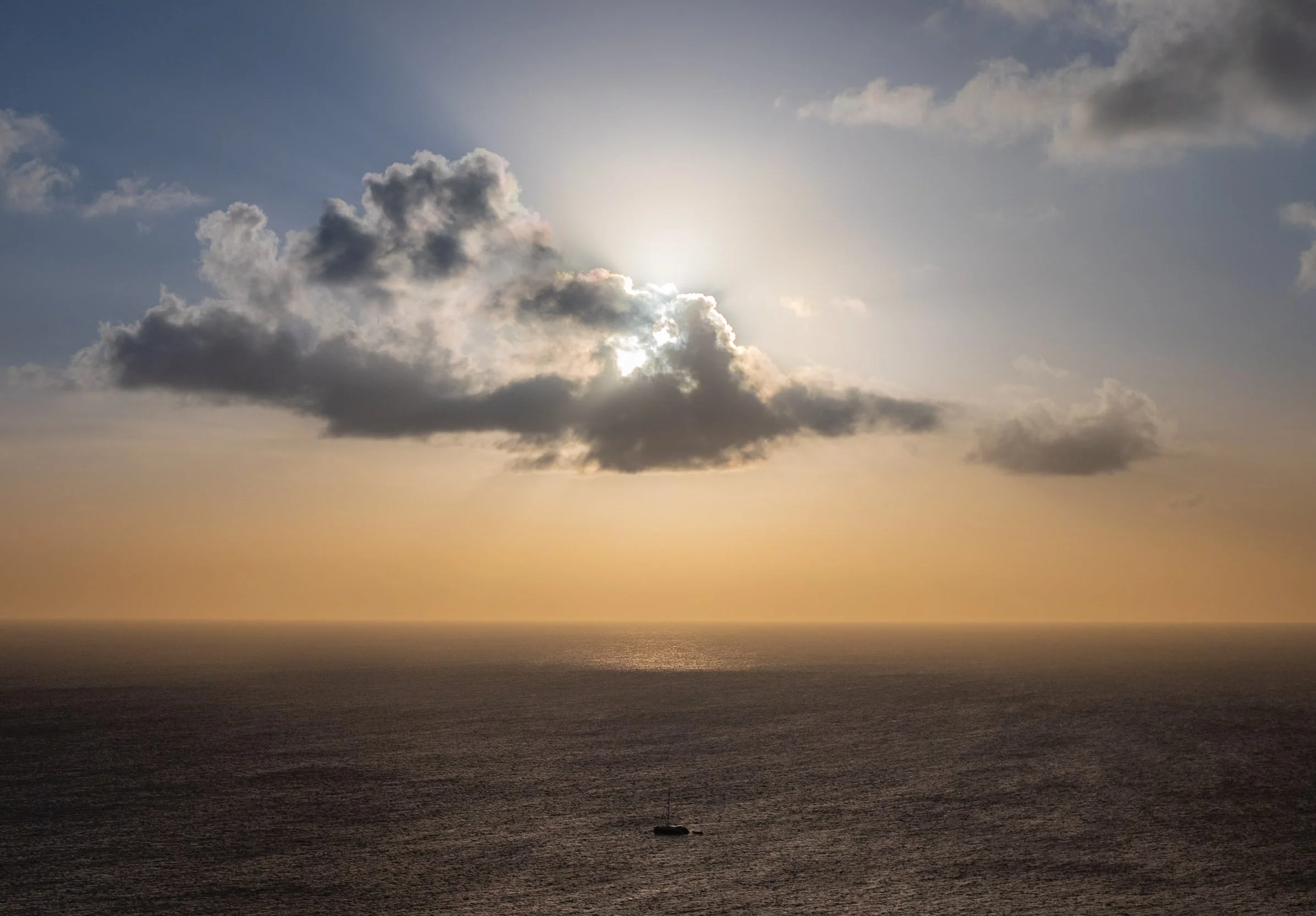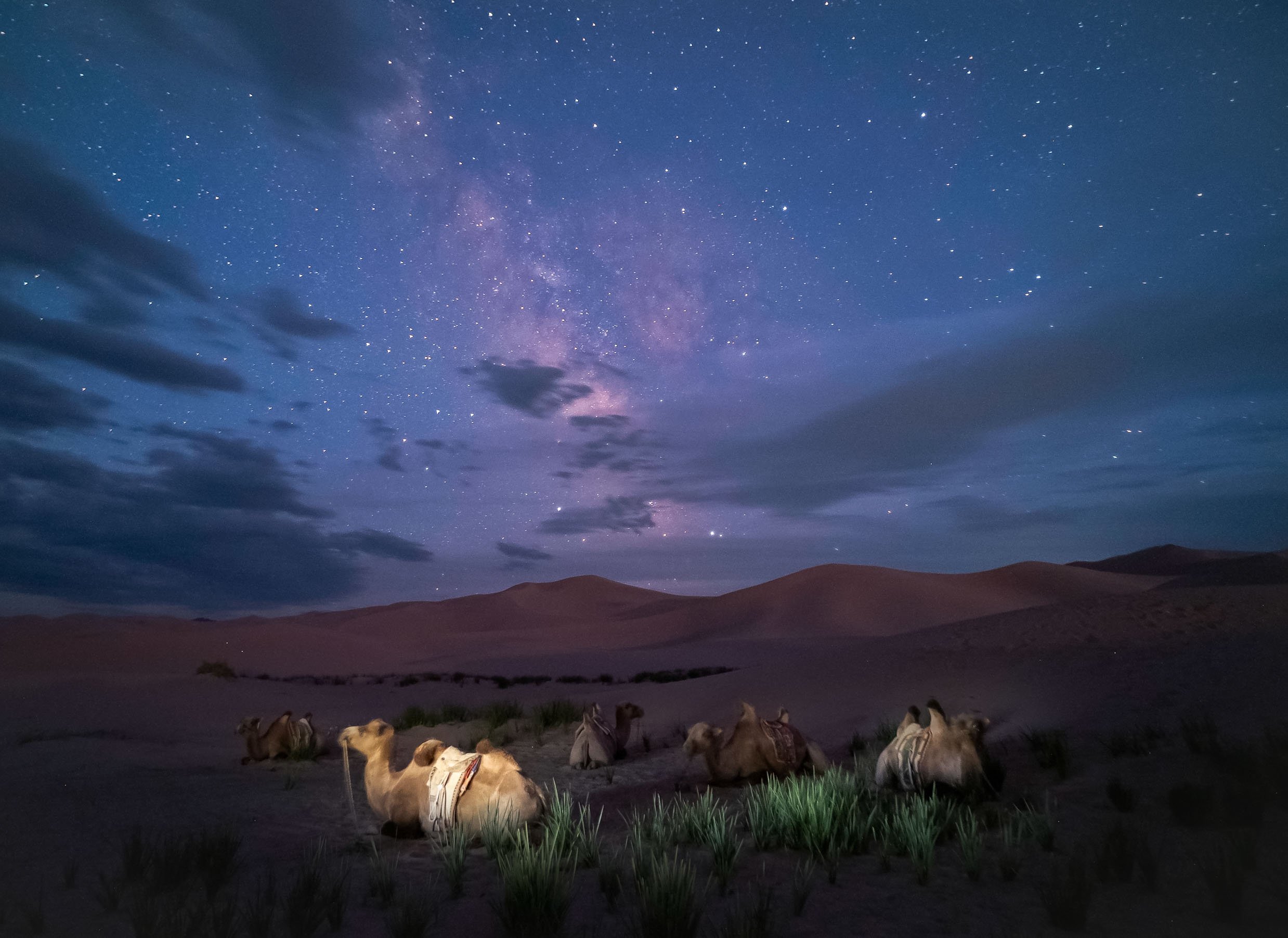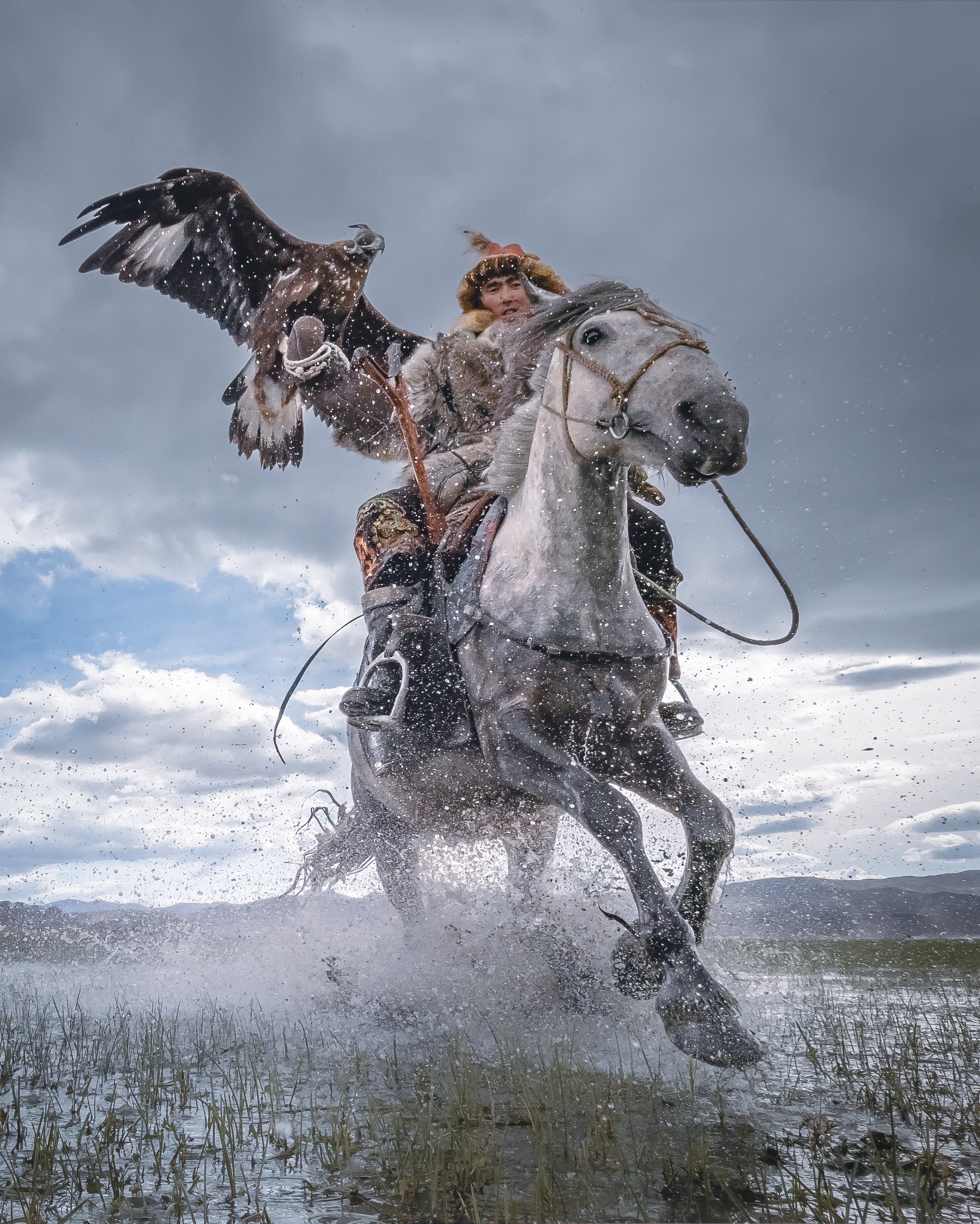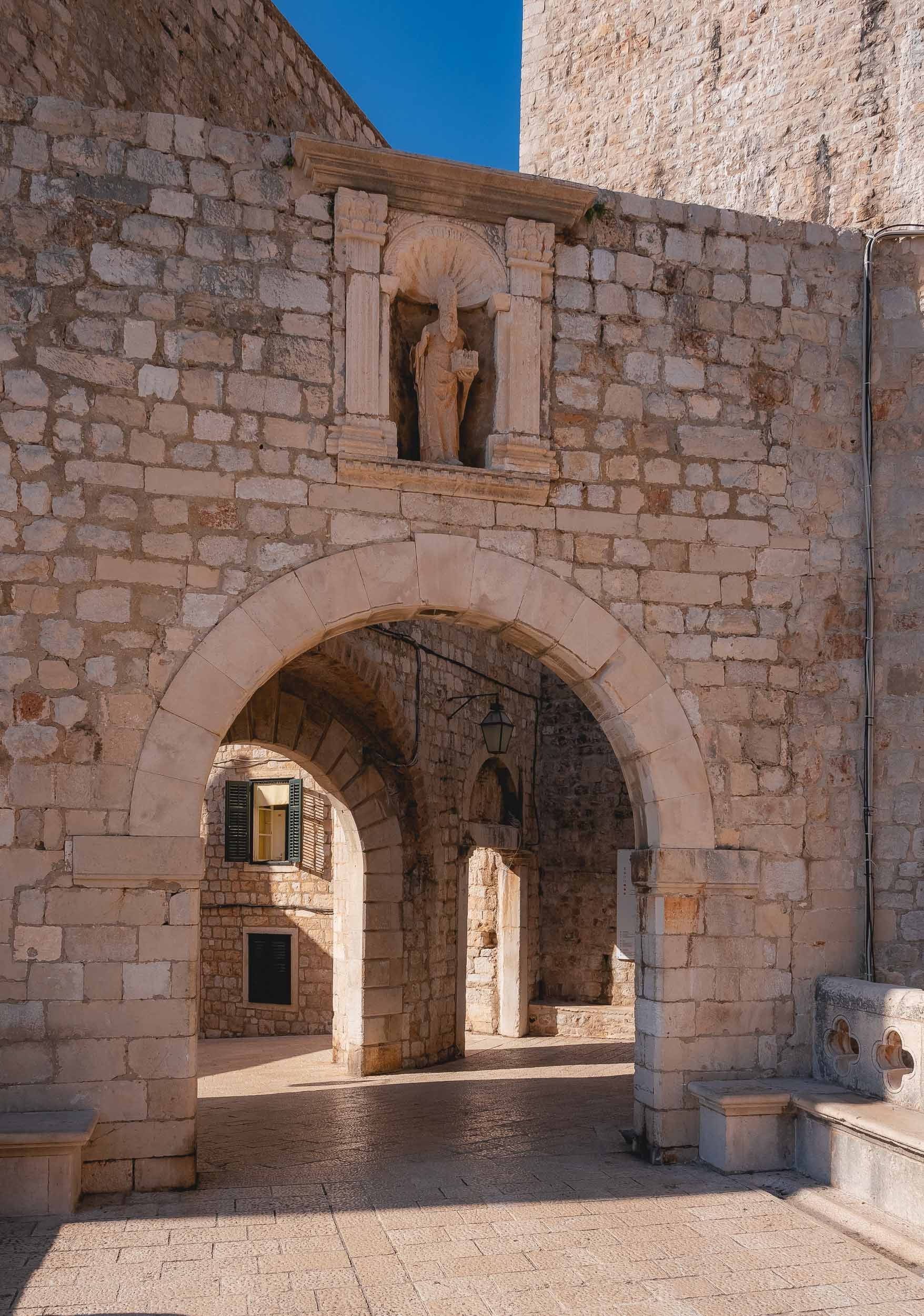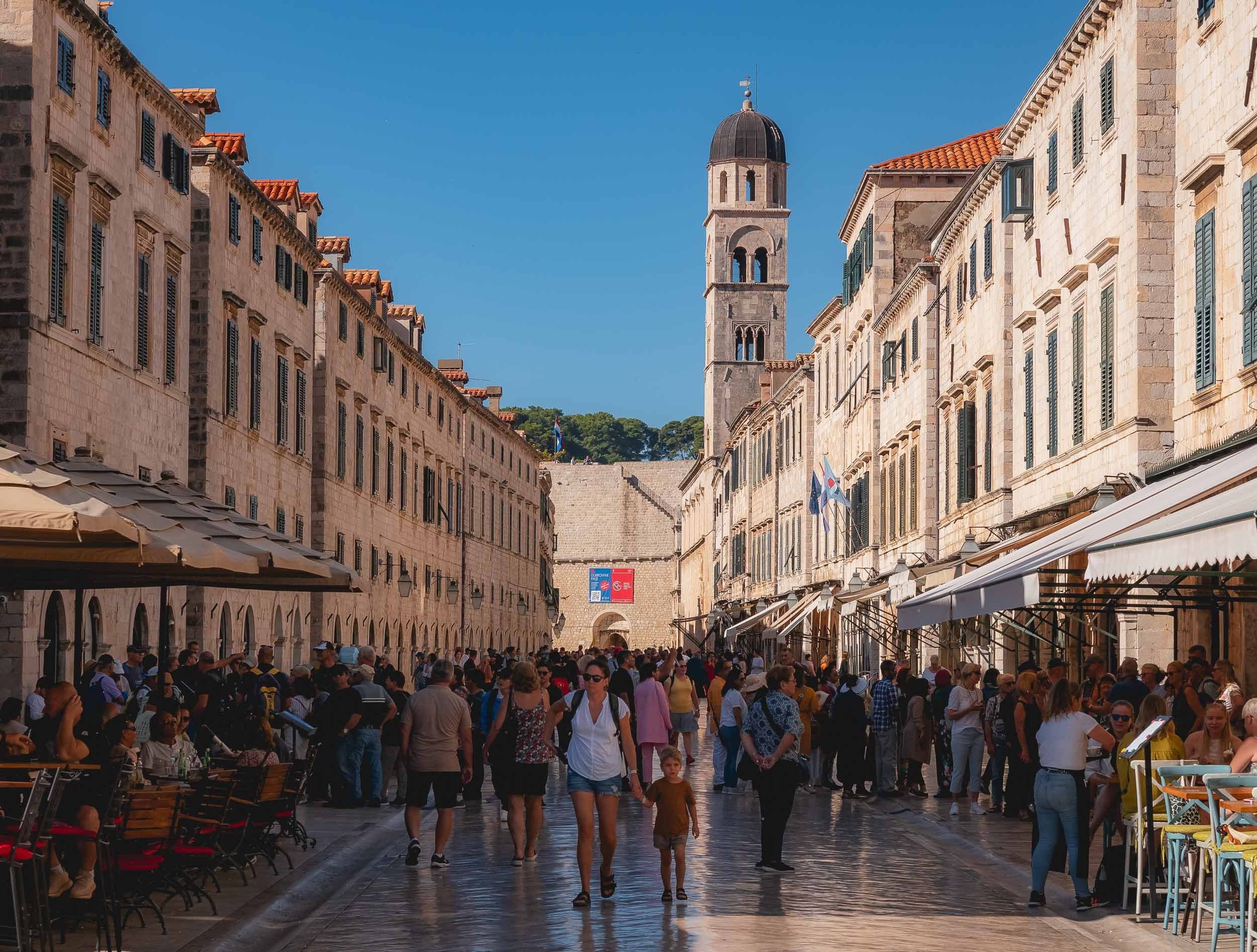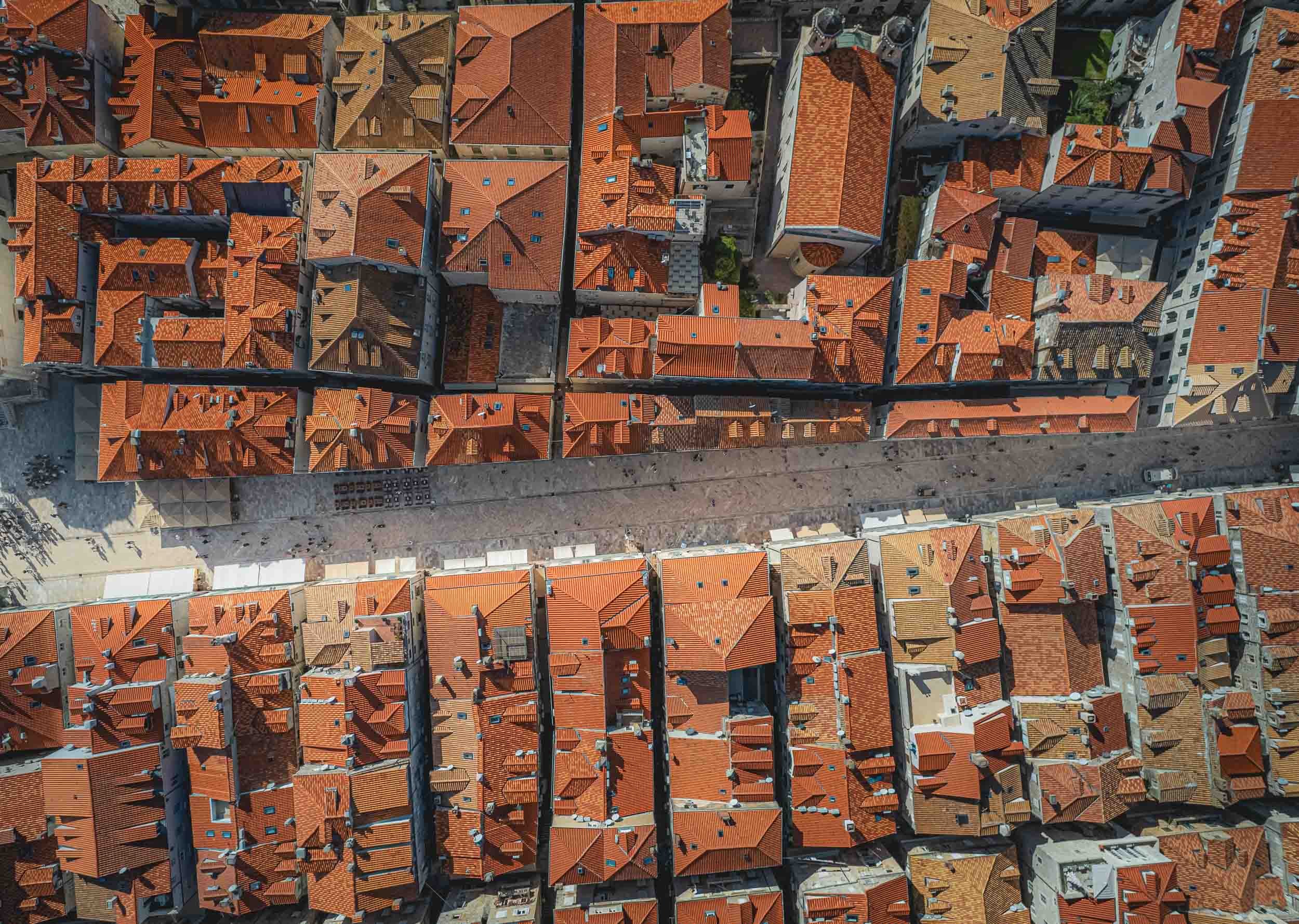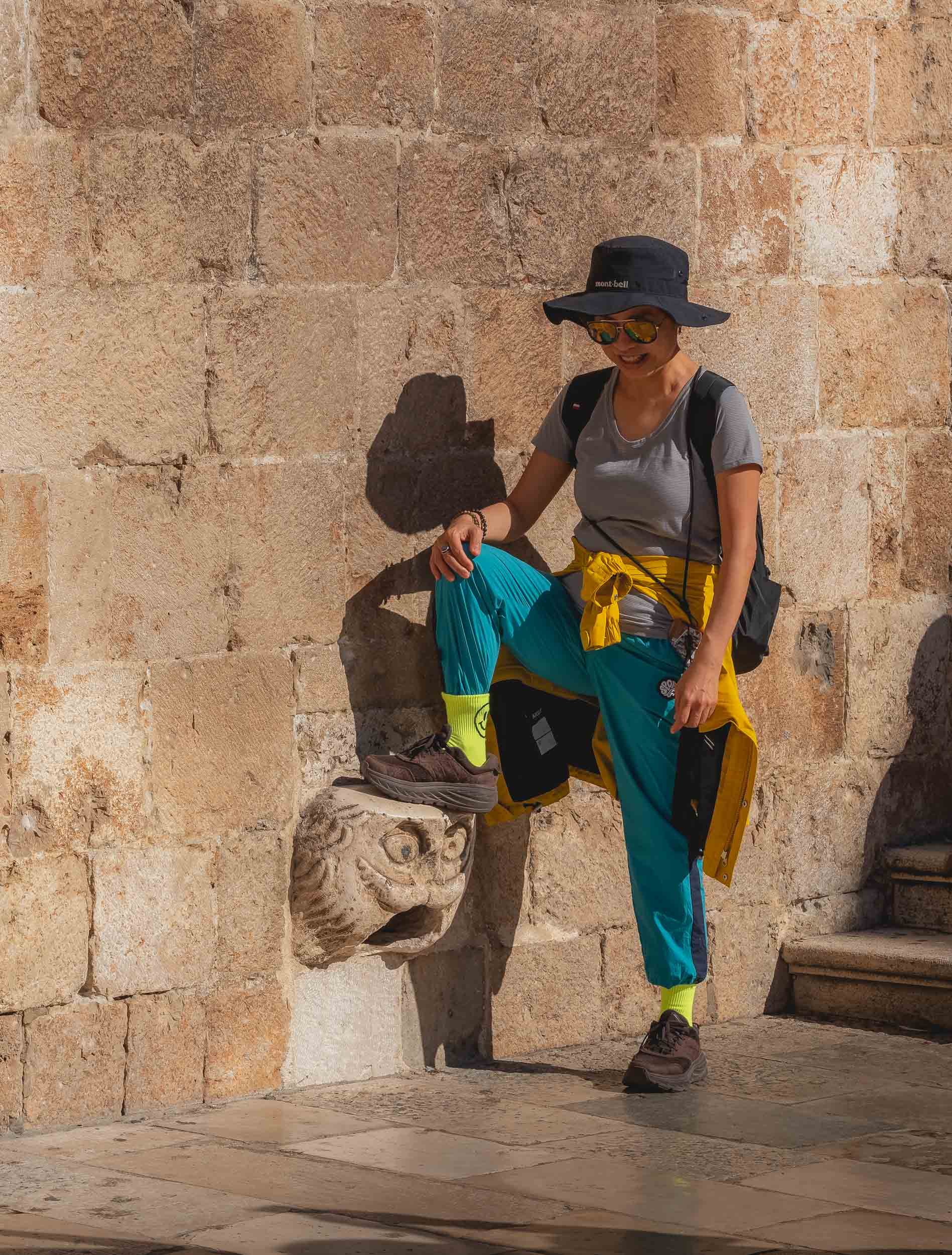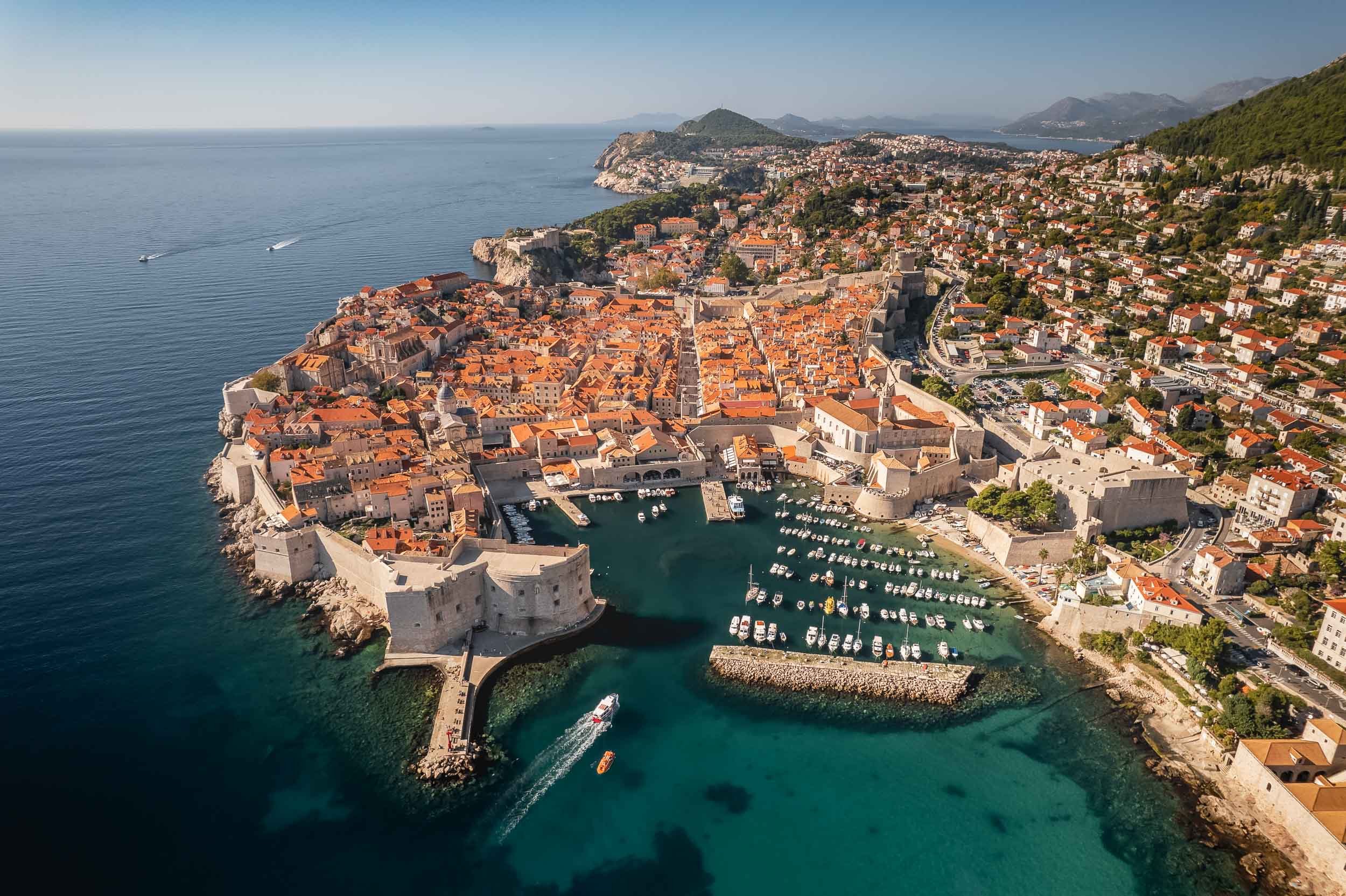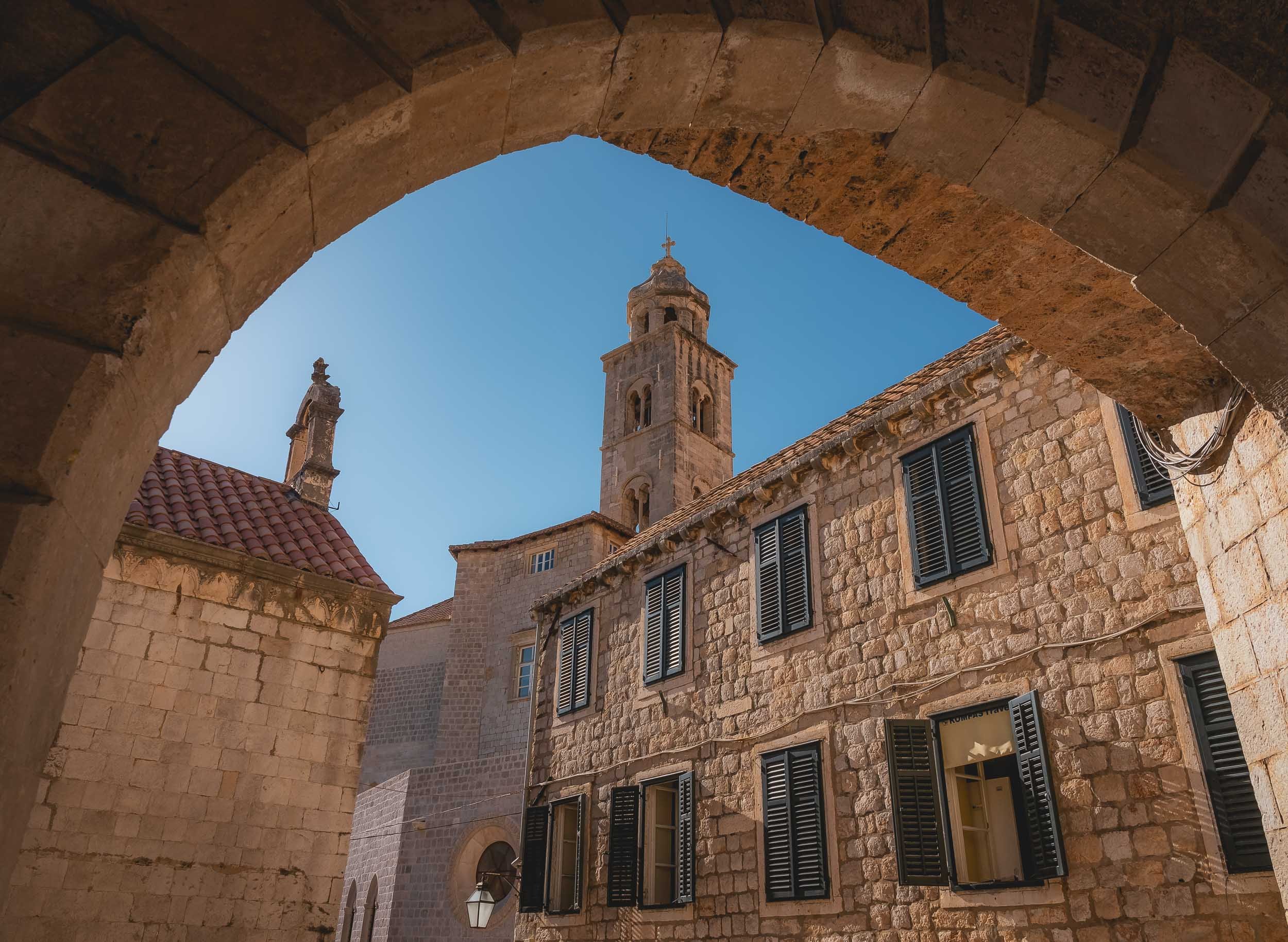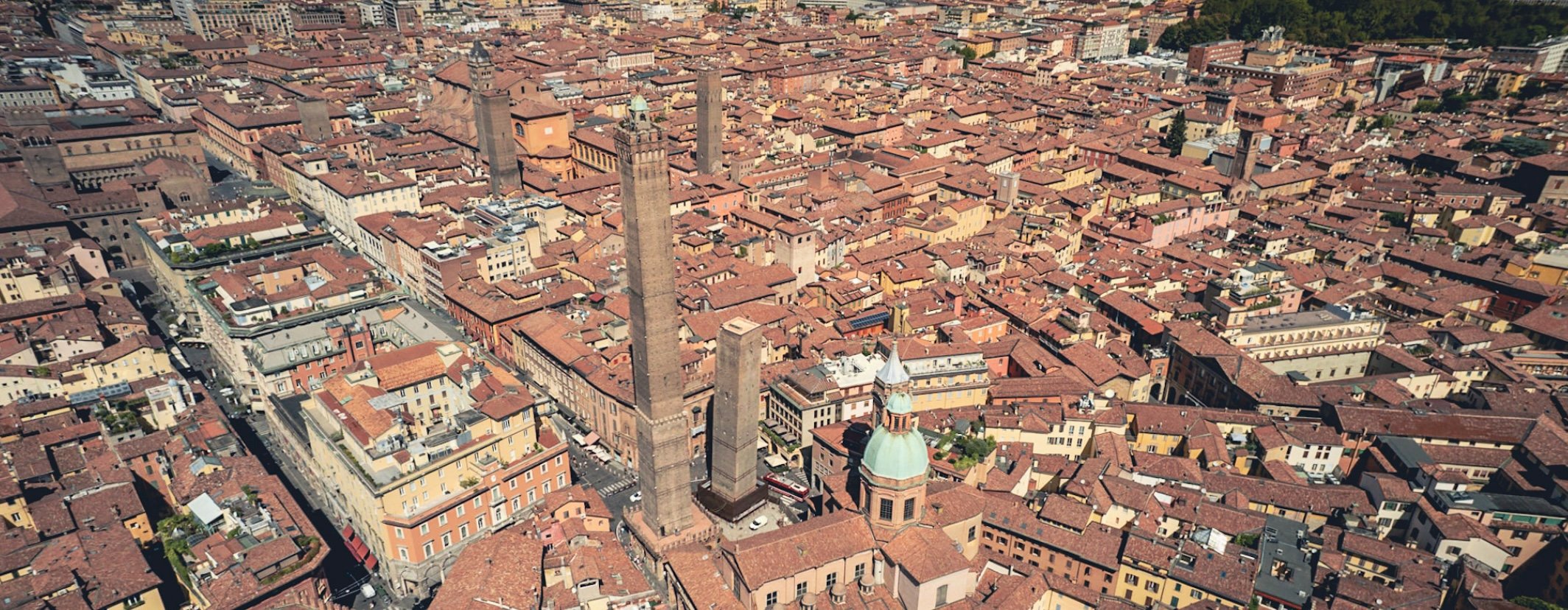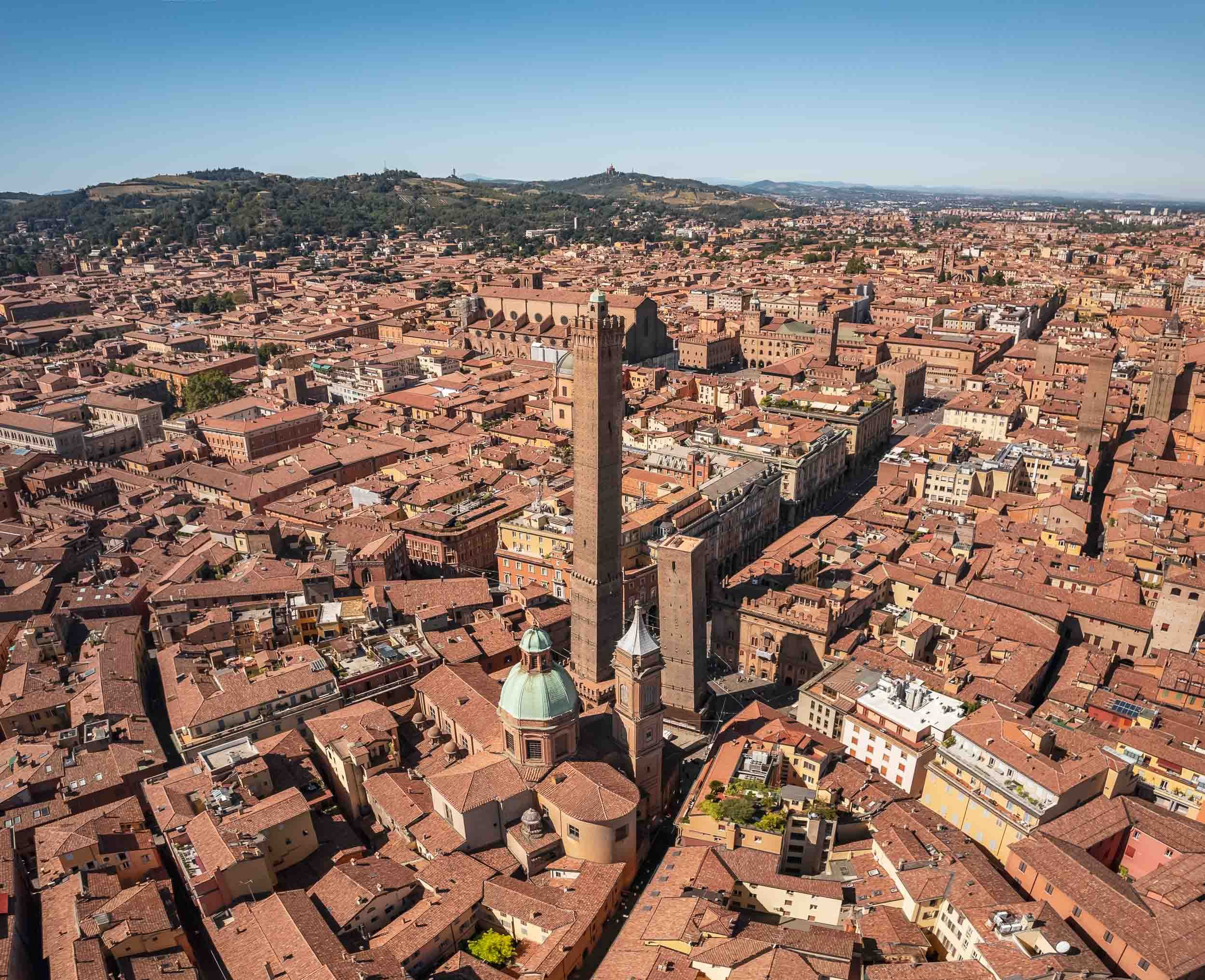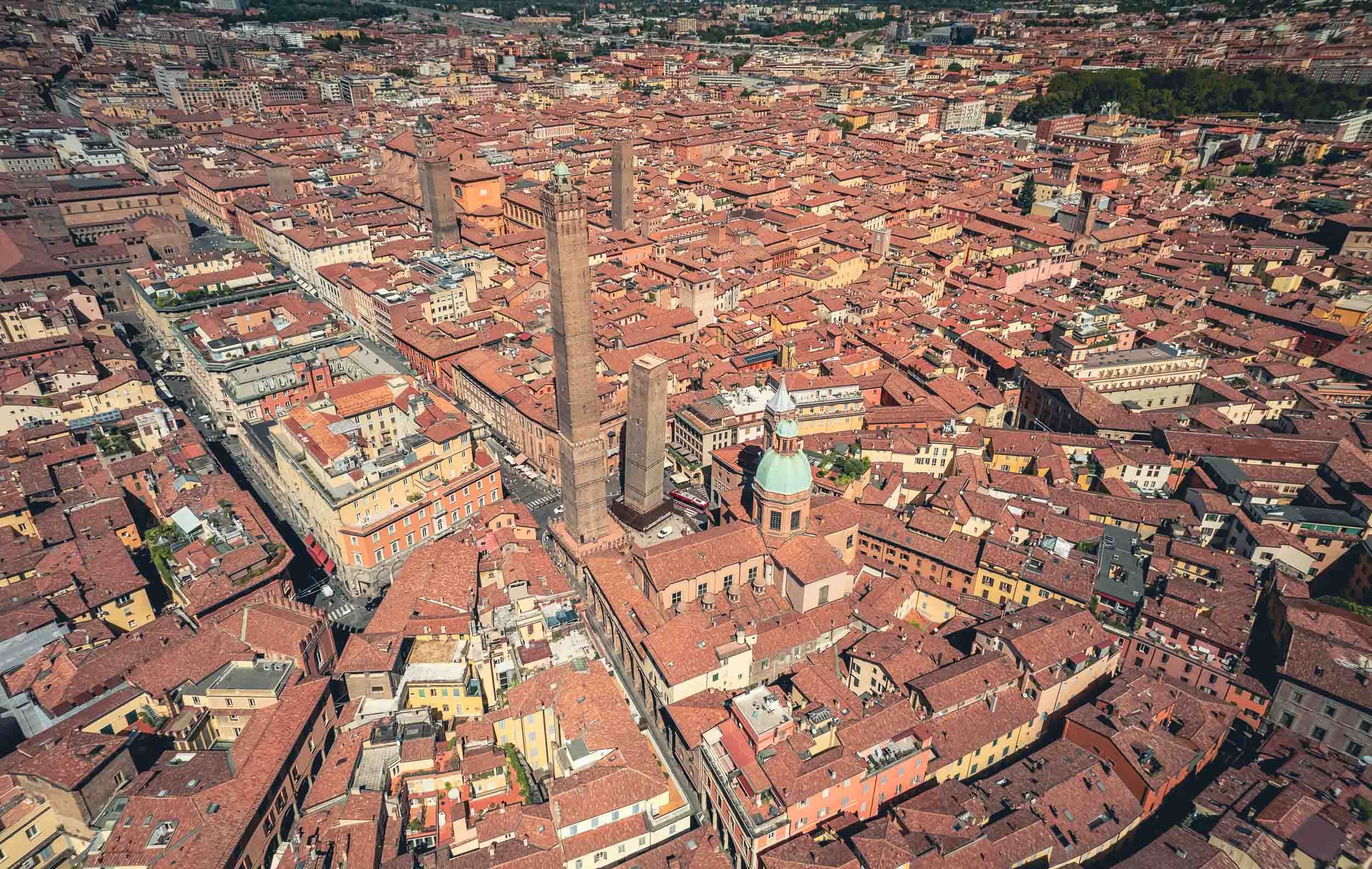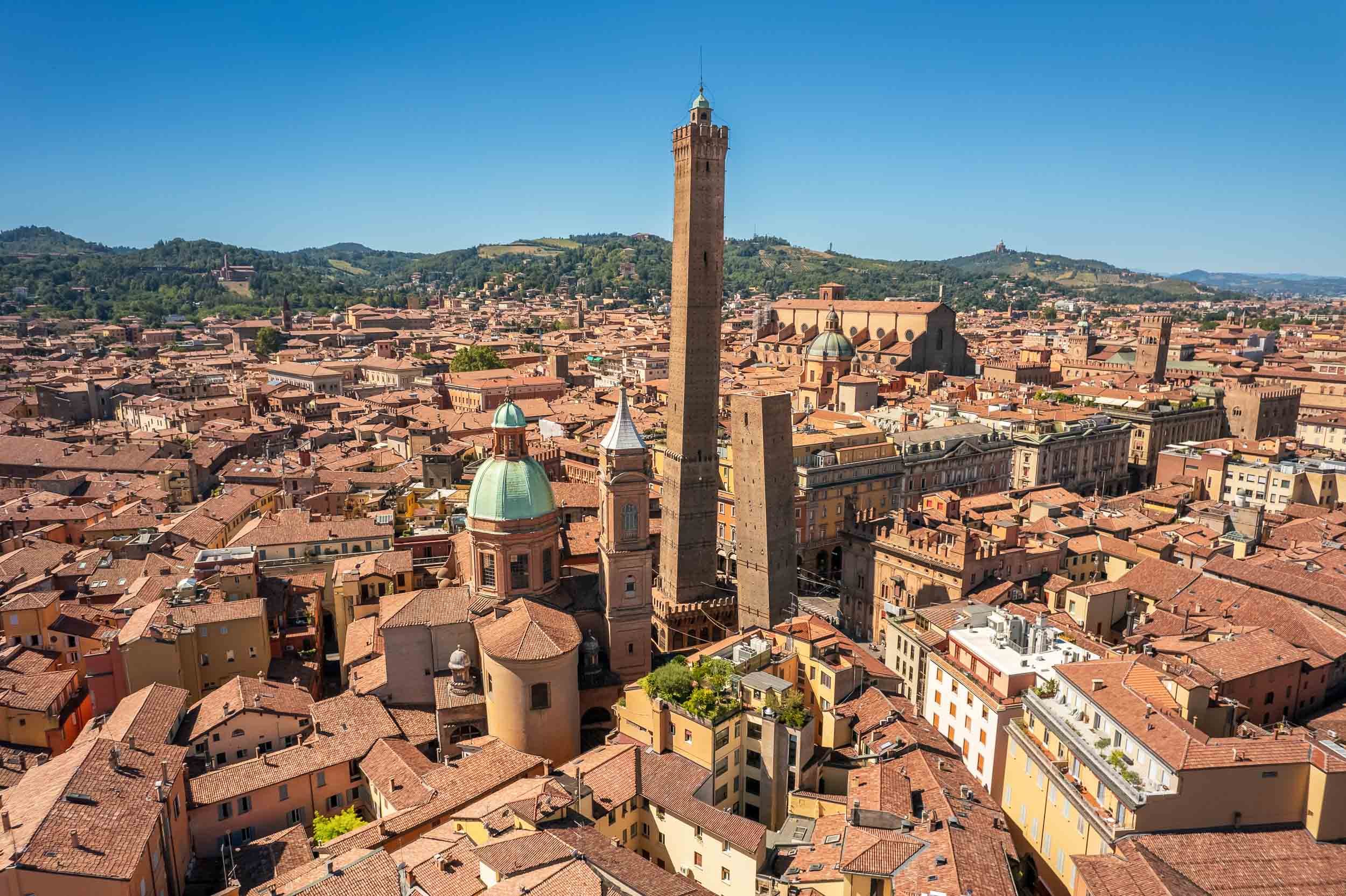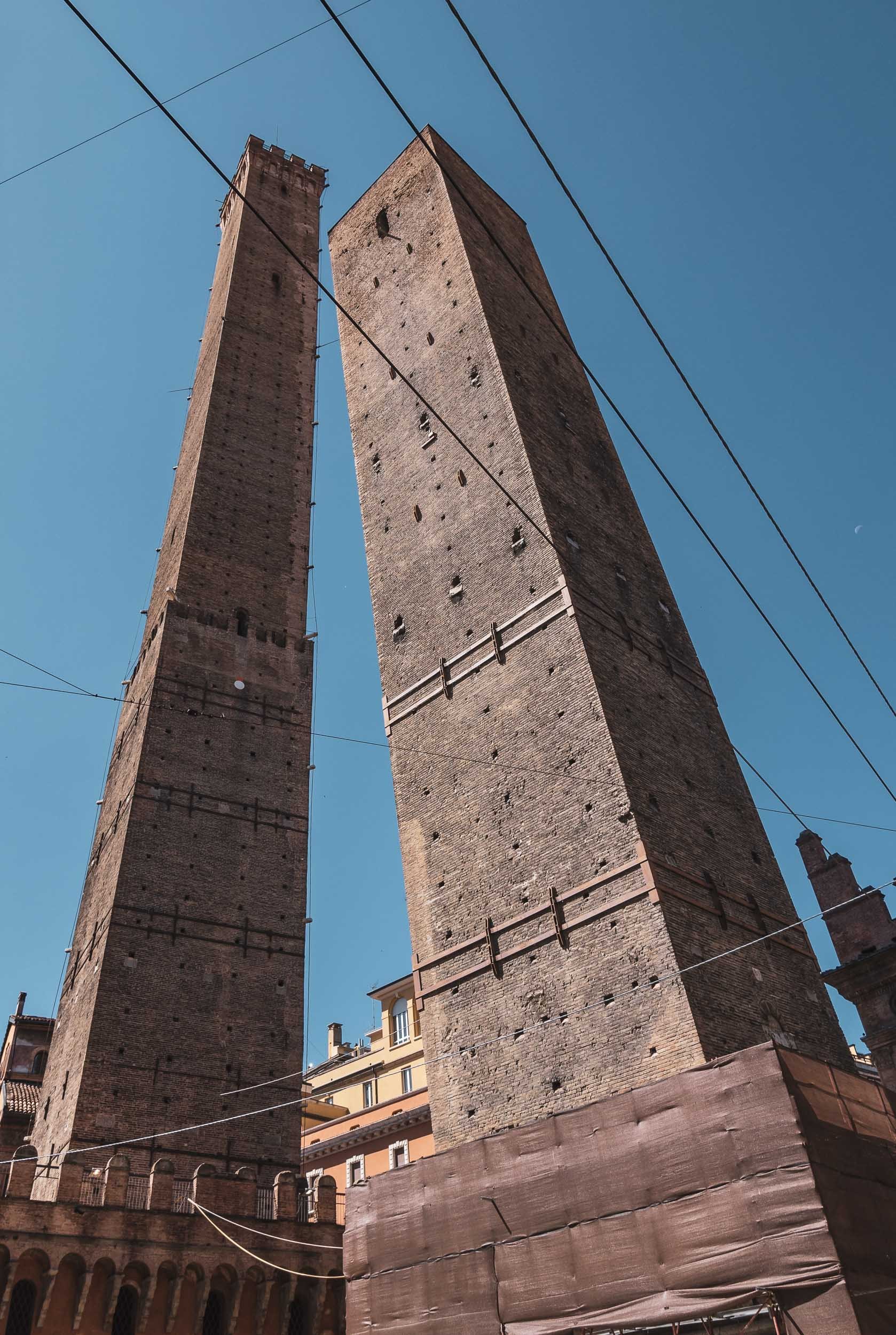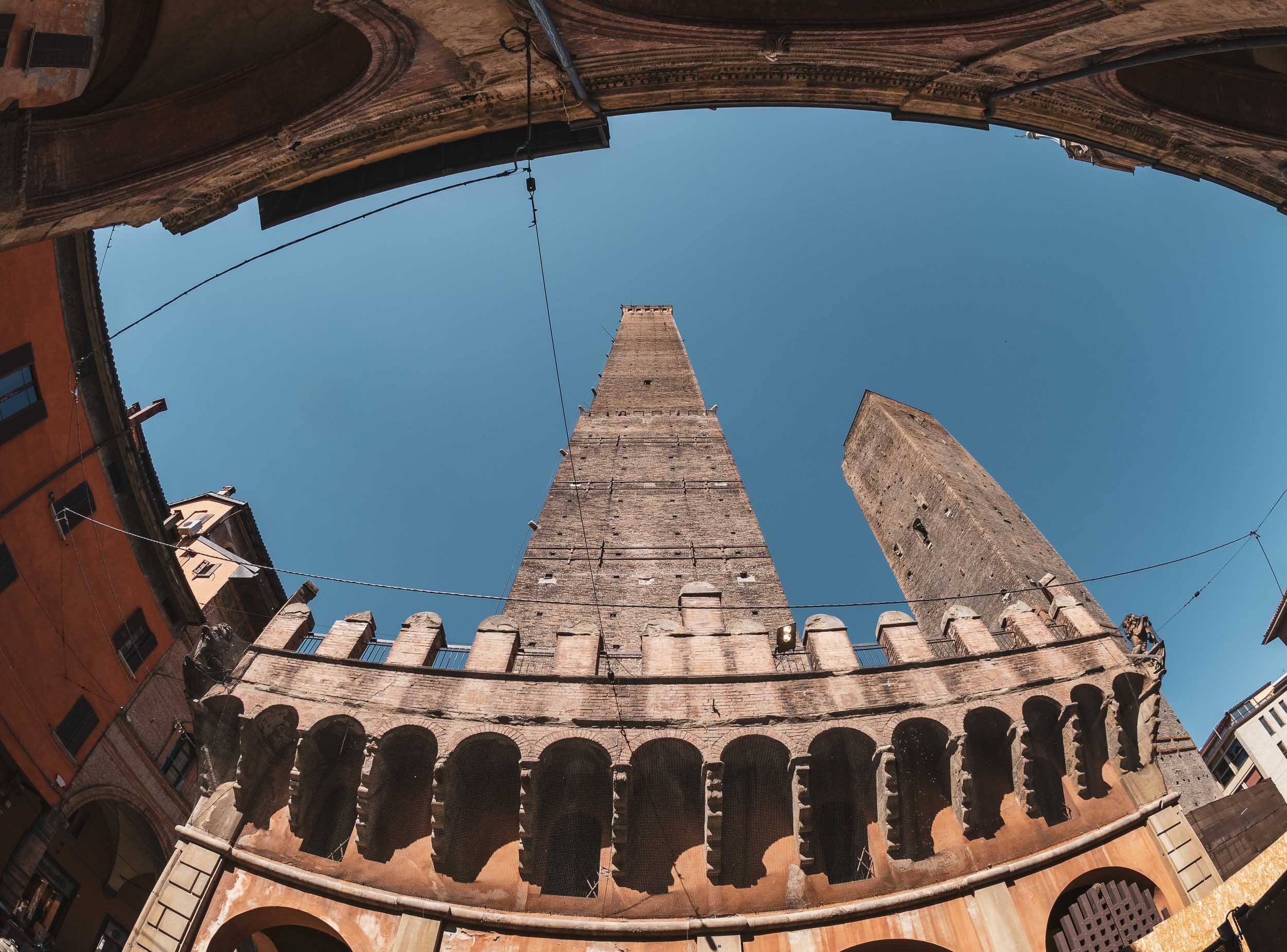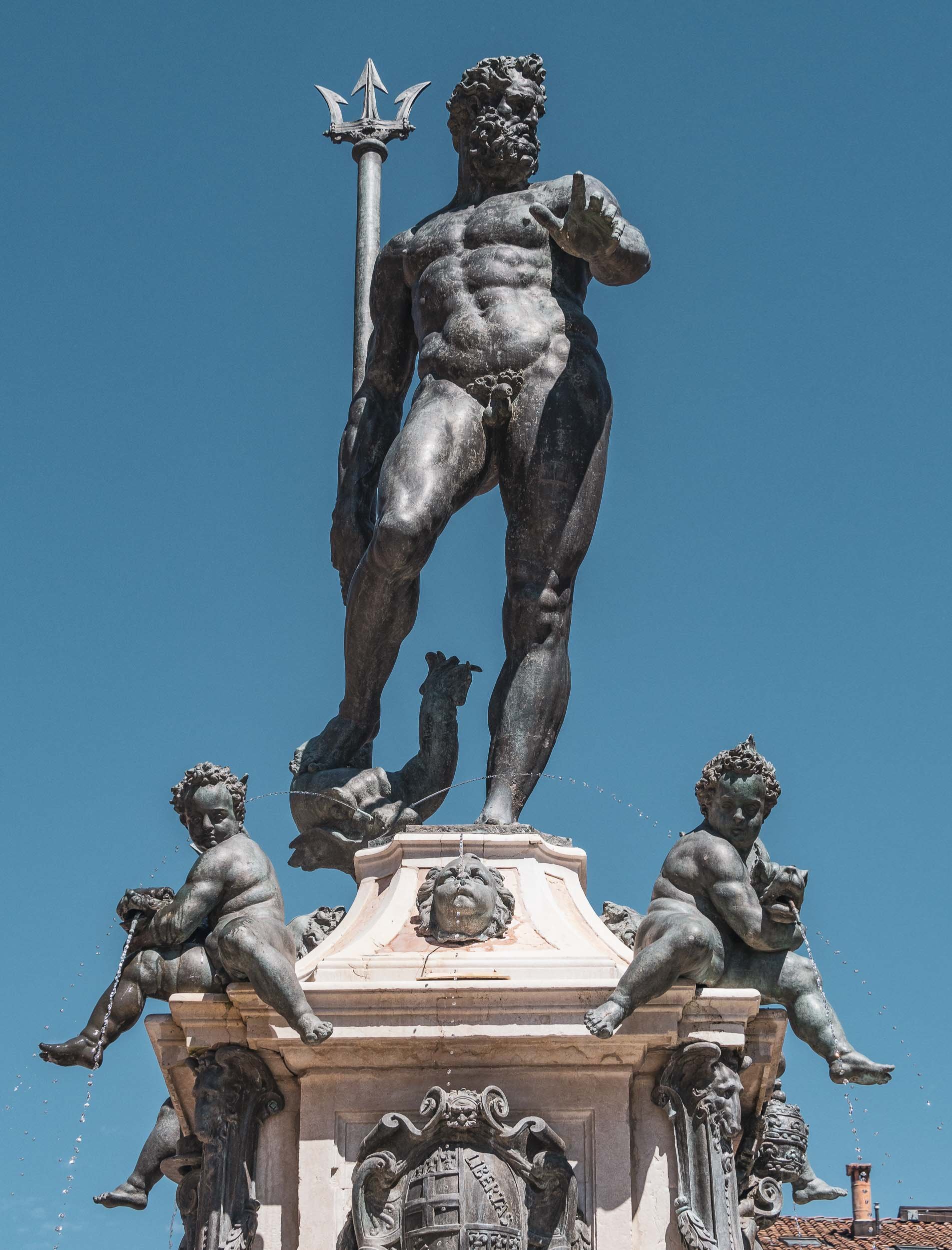Island of Wonders - Mauritius
A family trip to Mauritius gave me a few opportunities to document some the island’s amazing sights, from the underwater-waterfall to the 7-coloured earth, and resident sperm whales.
In late 2024 a family trip took me to the amazing island of Mauritius, east of Madagascar and south of the equator. In fact, it was not my first trip to the country, but the last one was cut rather short due to some unfortunate circumstances, so this time I actually got to see a little bit more of the island. Having said that, it was a family trip, and as a result, what you read in this blog is the result of less than 2 days of photography. It mainly covers some of the more famous spots, but I know Mauritius has a lot more to offer - maybe next time.
Highlights
With only a day and a half of time allocated to exploring, I tried to optimise my time to see most of the interesting places on the western side of the island, where we were staying. The main island is just 65km by 45km, but it’s mountainous and the roads are not always the most efficient. It can take a few hours to go from one place to the next. Take a quick look at this video for two of the highlights - you’ll read about them below.
Grand Bassin Temple
But first, I started in the early morning from the north-west of the island towards to the Grand Bassin Temple, situated in a volcanic crater in the forest areas at higher altitudes. Its history dates back almost 150 years, and it features the tallest Hindu Goddess Durga statue in the world, completed in 2018.
The temple is the most sacred Hindu temple in Mauritius, dedicated to Shiva. Almost half of the population follows Hinduism, while the rest is quite mixed across Christianity, Islam, and others. The foggy weather created a kind of eerie atmosphere here, especially with the statues around, and the temple was almost empty - that is not the case later in the day or in festivals, when the whole area gets extremely crowded
Kovil Montagne Temple
Another beautiful Hindu temple sits on the foot of the Corps de Garde mountain, with a beautiful view over the Quatre Bornes district.
It was originally established in 1907 by an Indian laborer and now features intricate colorful decorations, even covering the drainage system - and some remnants from the various festivals being held here during the year.
Trou Aux Cerfs Volcano
Just a few kilometers away lies one of the many volcanic craters of the island - in fact, Mauritius as a whole is was entirely formed by eruptions millions of years ago.
This one is rather interesting, as it sits in the middle of the city, and the crater is surrounded by a road.
The crater is 80m deep with a small lake in the middle, but not accessible. It last erupted 700,000 years ago. It’s quite an interesting place, with a few endemic plants, as well as fruit bats and monkeys calling it home. Having said that, the zebra doves shown below are not actually native here and have been introduced from Southeast Asia.
⛵️
Not far from here you can observe a traditional craft of the country: Mauritius is known for its tradition of model ship building, with several workshops producing detailed replicas of historical boats. Nowadays this activity is mostly aimed at tourists, but still practiced by hand.
The level of detail on the model is amazing, and it takes the artisans days to finish a single ship. They split the work by different activities and skills.
For someone like me who enjoys building things by hand and has been dabbling with making models since childhood, I can absolutely appreciate this work. Having said that I’m not so sure how I’d feel about having to do it daily for a living…
Le Morne
We moved on th the very southern tip of the island, to one of the country’s two UNESCO World Heritage Sites, chosen for its representation of the resistance to slavery. The mountain was used as a fortress for shelter at the time of the slave trade on the east coast of Africa. In front, the newly opened Riu hotel - can’t say it adds to the scenery…
An Underwater-Waterfall?
But the very special sight here is actually in the water just off the coast: an optical illusion, making the sediment pattern being carried by the current appear like a waterfall on the edge of the ocean shelf. There are two ways to see this curious visual phenomenon: by drone, or by seaplane.
I tried to do both. Both came with challenges, mainly caused by the tropical cyclone raging with heavy wind and rain in the north-east of the island during our visit, and in both cases, it took more than one attempt to make it… but in the end it did happen.
These first two images were taken by drone. The flight from the beach is not an easy one - to get this photo, you need to fly almost 2km into the sea under - in my case at least - heavy westward winds, which probably would have been enough to carry a small drone into the open ocean. On my first day of exploring I didn’t dare to fly here for this reason, but the second day was a little calmer.
To get the perspective, a panorama shot is necessary (3 x 3 photos at least), but it does give a very cool effect of the island being sucked into the depth of the ocean.
From from the sea plane
I also tried my luck with sea plane in slightly different conditions. Funnily enough it’s similarly nerve-wrecking as flying the drone under over the open ocean in the wind, but a little more fun, especially as the pilot decided it would be a great idea to do a brief nosedive over the waterfall.
The panoramic view from the drone makes the landscape look a little more extreme, but I like the light on the seaplane photos better.
We also saw this little palm shaped channel on the southern edge of the island, and a few beachgoers and windsurfers enjoying the coastline.
Chamarel Geopark
After the seaplane ride, we had one more destination on the agenda before the sun went down: The Geopark of Chamarel.
🐢
This beautiful nature park is actually famous for a specific attraction, but also features the tallest single drop waterfall on the island at almost 100m, seen above, a beautiful ebony forest (closed by the time I got there), and a small tortoise park. Mauritius was once home to its own giant tortoise species, which went extinct in the 1700s. Nowadays they’re imported from nearby Seychelles.
The 7 Colored Earth.
.
What most people come here for though is this natural phenomenon: a relatively small area of sand dunes that have very distinct colors - whether there are seven is probably down to your definition.
Either way it’s quite a fascinating place, as the rains have carved out lots of channels into the landscape, creating small hills in the area. We had a moment of sunshine which immediately changed the hues.
I had pre-arranged to come shortly before official opening hours ended, meaning I had a few moments with no people here. On top of that, the management kindly granted me permission to fly a drone after the park closes, which is normally forbidden (and monitored). Unfortunately by the time everyone was out, heavy rain clouds had moved in and I had about 5 minutes in the air before the rain got too heavy for my drone (or my risk appetite for losing it). It’s a very unique spot in the forest though, worth visiting.
Ocean Giants
I had half a day reserved to try and go out and see what is maybe Mauritius’ most famous animal sight: its resident pod of sperm whales, on the east coast. I was hoping to be able to get some underwater photos of these majestic creatures. It’s a double-edged sword though - the country has recently enacted much stricter laws on swimming with dolphins and whales due to tourist overcrowding, but there is a mix of tour operators that still do it - illegally, or by (allegedly?) having a permit. It does seem like there are regulations allowing people in the water with whales under certain conditions, but there is undoubtedly some “noise” and questionable operators out there.
Either way we rented our own boat with a great guide who claims to adhere to the rules, to be able to avoid possible crowds and have more flexibility on timings. The first challenge was the weather - the active cyclone bringing winds and occasional rain with it didn’t exactly create the best conditions for a boat trip into the open sea. After two cancelled attempts, we managed to go out as the winds and waves subsided.
I hoped we’d at least get to see these animals, and my backup plan, if going into the water would have been problematic or unethical, was to try get some photos with the camera in its case held under water from the boat. First, you need to find them though.
For most whales, that means looking for the huge spouts and the associated blow as they exhale and breathe at the surface - this also works with sperm whales. However, they have another feature that makes it possible to find them: Sperm whales use a powerful form of echolocation, emitting loud clicks that bounce off objects for them to form an idea of their surroundings.
Equipped with a hydrophone (a kind of underwater microphone), we hoped to pick up these sounds and find the pod.
After about an hour at sea, the plan worked - we saw (& heard) them in the distance. We were the only boat, slowly approaching a large whale gently swimming along the surface.
Our captain told us to quietly get in the water as we were a good 30m away from them, and I got my first photo while being minimally invasive to the whale’s behavior.
Into the Deep
A few minutes later, the whale started to dive. Sperm whales generally hunt giant squid, often reaching more than 1000m depth and spending 45min or so under water. It is also one of the purposes of their echolocation abilities.
In this photo you can see the white line around their very narrow lower jaw - this is the area where the mouth houses huge teeth, weighing up to 1kg each. As it happens though, it seems they don’t really need or use them for hunting.
We made our way to another location where a group had been sighted, possible of the same pod. There are just around 50 resident sperm whales in Mauritius, living in a matriarchial society, with migratory groups and males joining them seasonally. They are quite social and intelligent, with the largest brain of any living animal (five times heavier than a human brain), and live up to 70 years.
It was at the point where there were more boats around, and groups of snorkelers jumped into the water in a manner that was way less respectful (and way closer) to the animals than one would hope for.
It gave me the chance to put the size of these whales into perspective - can you see the human legs for scale in this image?
Sperm whales can be up to 16m long and weigh 45 tons, making it the largest toothed predator.
As is often the case with wildlife encounters, there is a fine line between experiencing and documenting these creatures in their natural habitat, but not disturbing them - especially vulnerable species.
Luckily these whales are no longer hunted today - in the past they were sought after for whale oil, as anyone who read Moby Dick will know.
While what I saw here was nothing in comparison to some of the dolphin, whale shark, or manta ray watching tours in many places around the world, it still seems like there needs to be more oversight - I include myself in this problem, although we kept a very reasonable distance, and didn’t cut off their path like some other boats that arrived later.
With this in mind, we left these amazing animals behind, saying goodbye to a young one that dove under is, down into the depths of the ocean.
Watch them moving
Take a look at the video to see them gliding through the ocean, and listen closely for the click sounds in some of the clips.
Goodbye ☀️
A much more enjoyable second visit to Mauritius came to an end with a few relaxing days, but I still feel like this island has a lot more to offer - amazing dive sites, the rich cultural history, monuments to the slave routes, including Aapravasi Ghat (its second UNESCO site), one of the oldest horse racecourses in the world, amazing hikes, critically endangered plants, and more.
We shall see if I’m back - or rather, when.
Subscribe to my newsletter to get notified and don’t miss out on more Wonders of the Globe.
Other Recent Posts:
Drone Photography - A New Book
During 2024 I have been working on a new project for German publisher Rheinwerk, co-authoring a book filled with inspiration and instruction for aspiring drone photographers.
Just about a year ago I was approached by German publisher Rheinwerk with an opportunity to take part in their latest project: an instructional and inspirational book for aspiring drone photographers. Having been using drones for almost 10 years (yep, I started with the very first DJI Phantom model) and accumulating a large collection of aerial photos in the process, that sounded like an interesting task. On top of that, I had quite a bit of experience and insight to share (including the painful kind, having lost two drones so far and missing plenty of good photo opportunities), and enjoy helping others in their own journey.
So myself and the four co-authors, Tobias Fröhner, Stephan Fürnrohr, Kerstin Maier, Jan Erik Waider embarked on this project, compiling our best drone projects, the behind the scenes, and all our combined technical, equipment and creative knowledge to finish this 384 page book, which now, 1 year later, is ready to order!
Disclaimer: For now this book is only available in German 🇩🇪, but an English version is being considered. If you’re a publisher reading this and would be interested in adding the English version to your portfolio, contact me!
Content
Image composition from the air
Plan flights with apps and Co.
Camera settings for optimal image quality
Flying in difficult conditions
Panoramic shots with the drone
Wide landscapes
Structures and patterns
Creative wedding photos
Magical light moods
Deserts, icebergs, volcanoes - discover remote places with the drone
Edit drone footage
The book is made for everyone who is considering to start with drone photography, readers who already have a drone, but are a little anxious about flying or haven’t gotten the photographic results they aspire to, and a little more advanced users who want to dive deeper into various techniques and look for new inspiration.
For everyone else not speaking German, below is sneak-peak into some of my projects that are covered in this book, all with tips and tricks on location, setting, equipment, useful accessories, processing and more. In addition, I’ve covered a number of specific techniques, such as HDR, panoramic photos, filters, and video recording.
Check out the “read more” links for my blog entries and stories from these places.
Architecture
The Pink Lake of Baku
Chocolate Hills of Bohol
Desert Roads of Dubai
Flamingo Shadows
Camels of the Gobi Desert
Volcanoes of Indonesia
Islands of Komodo
Minimalism on the Beach
Island Storms in Palau
Great Wall Golden Moments
If you have specific questions on drone photography, get in touch or leave a comment below!
Subscribe to my newsletter to get notified and don’t miss out on more Wonders of the Globe.
Other Recent Posts:
Mongolia - Vast Steppes & Nomadic Cultures
Mongolia’s vast landscapes, rugged mountains, beautiful deserts, and nomadic people have long been on my list for exploration
Mongolia’s vast landscapes, rugged mountains, beautiful deserts, and nomadic people have long been on my list for exploration (although that list is long, frankly). In August 2023 that opportunity came when I spent a couple of months in Asia and there was an open slot on Daniel Kordan’s Mongolia tour. I rarely go on guided group photography tours during my travels, as I often find them limiting in flexibility and scope, but the dates fit, and this tour definitely had some great aspects to it that are more difficult to achieve solo. In addition, it was led by my good friend from Dubai, Andy Marty, and also allowed me to fit in a short stopover in Beijing.
Mongolian Moments - Watch this to get an Overview
The White Stupa
We started our tour from the capital and by far the country’s largest city, Ulaanbaatar, but immediately went south for several hundred kilometers, with the first goal being Tsagaan Suvarga (White Stupa) - an eroded cliff that was once the floor of an ocean.
The ancient seabed is now a limestone escarpment covered with minerals. Oxygen exposure over millions of years then created this colourful scenery.
We continued our way onwards to the south and further west, with the final destination being the sand dunes of the Gobi desert, getting ever closer to the borders with China, one of Mongolia’s two mighty neighbors - the other being Russia in the north. Together, they make it the world’s largest landlocked country. As we approached our camp for the night, we got the chance to stop for a beautiful sunset…
… which quickly turned into a heavy storm, with rainclouds approaching in the distance.
As we arrived at our “hotel” for the night - one of the many ger (a traditional yurt-like tent still commonly used by the locals) camps that are dotted around the landscape, the rain clouds turned into thunder and lightning. Of course I couldn’t resist, threw the luggage into the ger, and set up the camera before the rain arrived. Using Olympus’ amazing Pro Capture feature makes catching lighting relatively easy in many situations, without having to set up triggers or even a tripod - these were handheld at 1/5s exposure!
Highways
Distances are vast with very little infrastructure - understandable, given that it’s the most sparsely populated country on earth (just over 2 people per sq km.) Although, the country’s road network has been increasing rapidly, the majority of the roads that do exist are not yet paved, making driving a bit of an adventure.
It’s not unusual to drive for dozens of kilometers through empty steppe, with nothing more than a few animals to see. The layers of diverse landscapes make up for it, such as here as we slowly approached the tall dunes of the Gobi desert.
The Gobi Desert - Dunes for Days
The Gobi Desert is one of the world’s largest. The majority of its landscape is not actually characterized by sandy areas, but instead features dry steppe and exposed rock. Having said that, the tall dunes, for example here around Khongoryn Els, make up some of its most beautiful scenery and we spent a few nights here to capture their shapes around sunset and sunrise.
Bactrian Camel Herders
A local family with their herd of bactrian camels joined us in the dunes to add a human element, and bring some scale to the photos. Bactrian camels have been domesticated in Mongolia for thousands of years - today, only very few truly wild individuals of a separate species survive, and these are critically endangered.
The endless shapes and flowing patterns of these dunes make for countless compositions and different abstract motives, especially as the light slowly illuminates their sharp edges.
The camels have been essential for providing clothing, sustenance from milk, and transportation for many nomadic people of the region for centuries. They are well adapted to the climate, with a long fur coat during the -40C winters, which they shed during summers when the temperature can reach 50C.
As the sun set and darkness creeped in, we had a short window to capture the Milky Way over the dunes before the moon rose.
Greenery in the Desert
Aside from the Bactrian camels, horses are also often kept by the nomadic people of the region. A river runs at the foot of the dunes in the north, creating green pockets of grass and scrubs for them to graze on.
The Flaming Cliffs
Home to the world’s first discovery of Dinosaur eggs.
As we left the dunes of the Gobi Desert, our route back to Ulaanbaatar had another stop in the plan, which was not only interesting to me from a photographic point of view, but also due to its geological and archeological history 🦖.
After a small break at a local well in the steppe of the desert, where the nomadic families raise drinking water for their horses and camels, we arrived at the so-called Flaming Cliffs: A geological locality from the Cretaceous period, deriving its name from the red glow the rock formations exhibit, especially during sunset - luckily the time when we were there.
Beyond their obvious beauty, this area is where some of the most significant fossil artifacts in the world were discovered: The very first finds of several dinosaur species, as well as the first-ever fossilized dinosaur nest, including the matching Oviraptor eggs. Another incredible paleontological find includes a pair of fighting dinosaurs, now immortalized as a statue on the small museum built on the site.
Nightly Exploration
After discovering these beautiful nearby rock formations during the day, an idea for some nightly adventure emerged: The result was some drone light painting as the Milky Way rose, with the odd meteor and a nice green airglow adding a little bit of extra interest.
It meant the night before our final drive to the capital was short (very short), but we got some fun images to take away.
The Bayan-Ölgii Province - Home of the Eagle Hunters
After a night in Ulaanbaatar, the next destination was the very western region of Mongolia close to Kazakhstan (although the two countries do not share a border): a two hour flight brought us to the province of Bayan-Ölgii. The reason? To spend time with the infamous Eagle Hunters of the local nomadic tribes that once settled here after leaving the east of Kazakhstan for political reasons. Even today, the vast majority of the population is Kazakh, Mongolian is not the primary language, and Islam is strongly represented here.
While the city is small and life is quiet and traditional, during summer time people still gather and go out. The winter tells a different story (from what I heard), as temperatures drop to -30C, running water becomes an exception, and power cuts occur regularly.
The city centre is home to a few abandoned structures from the former Soviet era, like this one, which was once seemingly a high school.
The outskirts of Ölgii feature a common sight in Mongolia, very different from traditional city structures: small houses with gerts owned (and sometimes occupied) by the local families, dotted in the yards. Even today, 30% of the population falls under the “nomadic” category, regularly and seasonally moving between locations.
Our primary purpose here was found a little bit outside the city, in the endless hilly landscapes of the area, where nomadic people live with their animal herds - and in some cases, with their eagles.
Golden Eagles
About 250 such Eagle Hunters are said to live in the area and still practice a tradition that goes back thousands of years: utilizing Golden Eagles for hunting foxes, hares, and other animals in the winter months, primarily for fur to make clothing items.
For the last 25 years, a festival takes place every year in October, where participants show off their skills and get judged on agility, speed, accuracy, and also style and dresses. While this has created a new income stream for the local population, especially after media coverage over the last 10 years, it is said that over the years the eagles utilized for the festival have been raised, trained, and kept differently than the ones actually used for real hunting in the winter, for example by ensuring they are accustomed to crowds. Even among the human component of the equation, the emergence of the festival and its associated tourism industry has changed the perception and purpose of eagle hunting, reducing the focus on its original purpose in exchange for winning competitions and gaining recognition.
Entrance
Aside from being able to take these portrait photographs here, the experience of spending time with the family in their gert and sharing a meal with them was a special privilege.
While the practice of eagle hunting is male-dominated, women can be found among the Eagle Hunters, and kids start learning to ride horses and care and interact with the large birds (their wingspan reaches 2 meters) at a very young age, albeit often beginning their journey with a falcon instead. Daiynbek Ay Moldir is one of the most famous Eagle Hunters of her generation, having won prizes at just 13 years old - and she definitely has the skill (and humor) of a champion.
We had plenty of opportunities to observe the Eagle Hunters in action, skillfully managing both horse and eagle in a coordinated union.
Smiling Faces
This got a little messy at times, but everyone still clearly enjoyed themselves. Although I can’t vouch for how the horses and eagles felt, there was clear evidence that it’s a respectful and caring relationship between animal and human.
In Action
Seeing these Eagle Hunters practicing their craft was impressive, and I wanted to try and convey the sense of power and energy in my photos from a new perspective. Using a remote controlled camera on the ground allowed me to get much closer to the action for a new angle.
Unfortunately time was not on my side and as a result I only had a couple of attempts to get these photos - while not exactly as good as I think they could be, I’m still happy to have been able to document this sight in a way that has not been done before. Take a look at the video below to get an idea of the behind the scenes!
Serik Jenisbek
One of the most well-known champion eagle hunters of the area.
We visited a few different locations in the beautiful Altai mountains ranges, which created a perfect backdrop straight from a movie set.
The Eagle Hunter’s Parade
Before making our way back, the opportunity to once more capture some Milky Way photos in the dark skies of the small city’s outskirts could not be missed.
Impressions from Ulaanbaatar
The capital is also by far the largest city in the country. With 1.6m inhabitants, over half of the population lives here. It’s a relatively modern and clean city with a mix of traditional vibes, paired with modern architecture, and remnants of soviet influences.
While August is quite an enjoyable time to visit Ulaanbaatar - or most of the country for that matter - it does hold the title of the coldest capital in the world, with temperatures regularly dropping to 40C below 0 in the winter months.
Parliament of Mongolia
The building is adorned with a huge statue of Genghis Khan in the centre, the first Mongol Emperor and responsible for making it the largest land empire in the world in the 13th century.
While I didn’t explore much of the city, I did want to visit the Natural History Museum of Mongolia and get a few more glimpses at its paleontological treasures, of which there are quite a few, including the fossilized dinosaur eggs and many well preserved skeletons. Unfortunately the museum itself doesn’t have a lot of English descriptions and background information.
And that was the end of my time in Mongolia - but it’s another country that has so much to offer (and much of it unexplored) that I definitely want to see more: finding snow leopards, experiencing the gobi desert covered in snow, exploring more amazing geological features, and witnessing the nomadic culture are all reasons to come back.
Subscribe to my newsletter to get notified and don’t miss out on more Wonders of the Globe.
Other Recent Posts:
Glimpses of Dubrovnik
After visiting another gem of the Adriatic, I took the chance to leave for the airport a little early to spend a few hours exploring Dubrovnik.
After visiting another gem of the Adriatic, I took the chance to leave for the airport a little early and spend a few hours exploring Dubrovnik, one of Croatia’s most famous coastal towns. It was just enough time to collect a few impressions - scroll down to see them!
The view towards the small port from the bridge. Dubrovnik’s history dates back to the 7th century, and for over 500 years it ruled itself as a free state.
Narrow passages with a loooot of stairs wind their way up to the right and left. You’ll find Europe’s oldest operating pharmacy and many other historic places while wandering around.
A majority of the city’s Renaissance buildings were destroyed during a large earthquake in 1667, and a lot of damage was done during the siege of 1991 - signs of repair are the brightly colored roof tiles on some of the buildings.
Today the city is very popular with tourists, helped by appearances in many movies and TV series - to the extent that the tourism board had to start staggering cruise ship arrivals in 2018.
And that’s one last flight over Dubrovnik, and my impressions after spending a few hours here come to an end!.
Bologna - From Tall Towers and Statues with Secrets
On a recent roadtrip to San Marino we passed Bologna, one of Italy’s largest cities and home to one of its most peculiar architectural features.
On a recent roadtrip to San Marino we passed Bologna, one of Italy’s largest cities and home to one of its most peculiar architectural features. Of course that was reason enough to take a small detour and spend a few hours in the city to document this special sight - in the process, we found another rather questionable historic remnant, read on to find out…
The larger of the two towers, Asinelli, is visible from many of the city’s streets at a height of almost 100m.
Take a flight around the towers.
A Statue with a Secret
Not far from the towers and near the Basilica di San Petronio on the Piazza Maggiore you’ll find another oddity in the city - this time facing horizontal rather than vertical…
There’s a lot more to see in the city, and a return is definitely on the cards the next time I’m in the Emilia-Romagna region.

